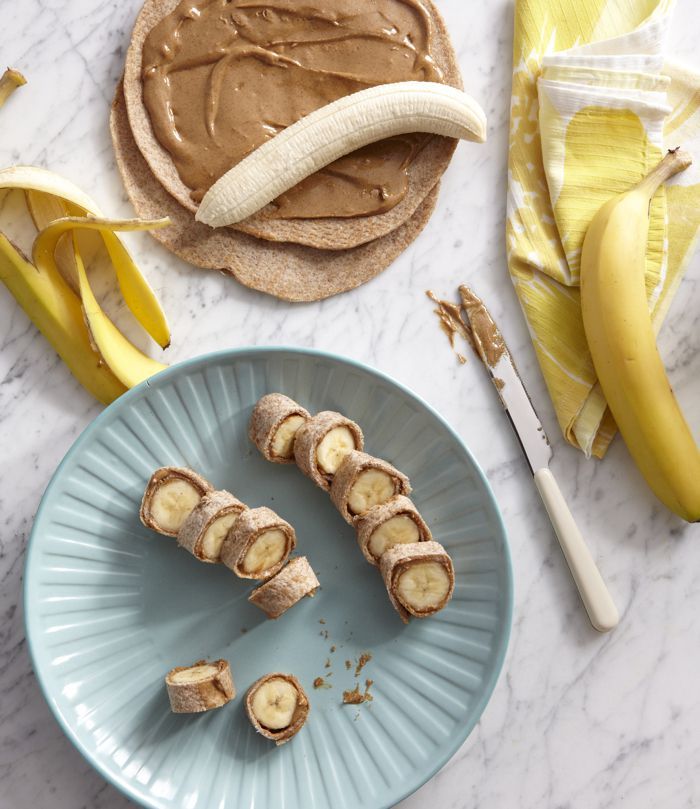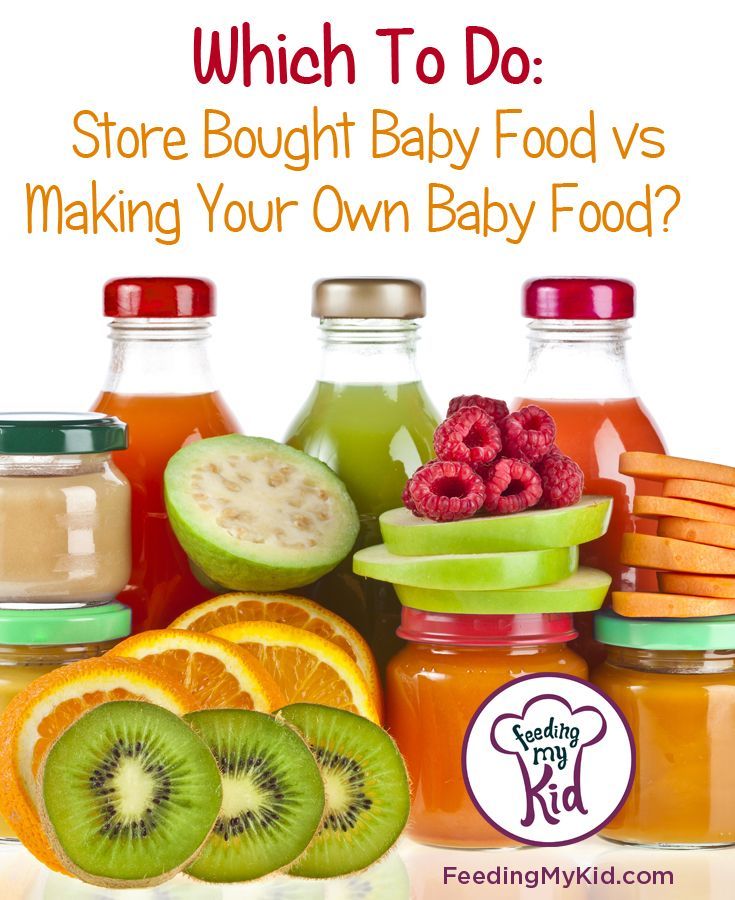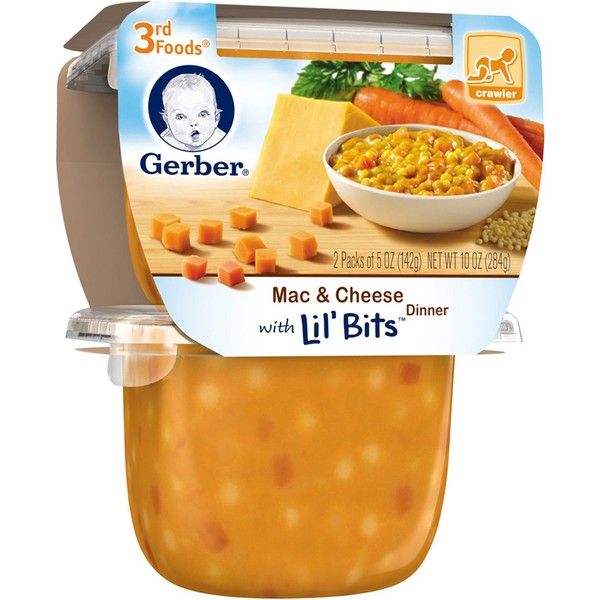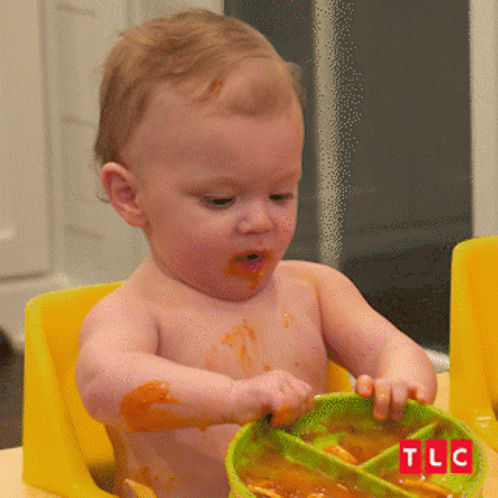Banana finger food for baby
Bananas for Baby (Best Tips and Recipes)
Learn the easiest ways to serve bananas for babies from the time they start solids to when they’re on into toddlerhood. With tips on banana puree, baby led weaning bananas, which bananas cause constipation (and don’t!), and banana recipes to try.
Bananas for Baby
Banana is one of those classic easy baby foods since the flavor is mellow and mild and they are so easy to prepare. I know that there are common questions when offering them though, so I hope to help clear up any confusion.
This post is meant to offer ideas whether you do purees or baby led weaning, have a baby just starting solids, an older baby, or even a toddler.
Bananas are rich in potassium, Vitamin B6, fiber, Vitamin C, among other nutrients. They range in flavor and sweetness—but they are a carbohydrate that’s classified as a “resistant starch” so they cause less glucose to be released into the bloodstream.
Which basically means they don’t cause quick spikes in blood sugar since they are digested slowly.
(I mention that since many are wary of bananas due to their sugar content, but we don’t need to worry about the natural sugars in fruits—especially not when they’re naturally paired with fiber which helps slow the rate of digestion.)
Bananas should be stored at room temperature and are best eaten when ripe. It can be sometimes hard to know when a banana is ripe, but I look for yellow fruit with just the some brown dots. You or your kids may prefer riper or less ripe bananas.
Bananas with more brown spots have more natural sugars and flavor, which. makes them a more flavorful option to offer.
(You usually want to use very brown bananas for baked goods that call for bananas.)
How to Prepare Bananas for Baby
There are a handful of ways to offer fresh bananas to baby that may depend on baby’s age and your comfort level with the style of feeding you’re doing. You can serve bananas to baby in the following ways:
- Banana puree
- Big piece of banana as a baby led weaning food
- Broken or cut into small pieces as a finger food
- Mashed and stirred into oatmeal, yogurt, or another puree
- Baked into muffins, pancakes, or another baked good
- Blended into a smoothie
TIP: You may also like Apples for Baby and this guide to yogurt and babies.
Banana Puree
Classic banana puree is made by pureeing ripe banana in a blender until very smooth. This is an easy and delicious baby food option for babies in the Stage 1 baby food phase, or typically around age 6 months.
You can progressively puree it less smooth so baby can adjust to a thicker texture or move to mashing with a fork.
What to Mix with Banana Baby Food
You can use banana puree or mashed banana to make a wide range of baby food combinations. Some of my favorite purees and foods to mix banana with are:
- Peanut Butter Puree
- Plain whole milk yogurt
- Baby Oatmeal
- Baby Quinoa Cereal
- Baby Rice Cereal
- Avocado Puree
- Mango Puree
Banana for Baby Led Weaning
Banana can be a really easy baby led weaning food. (That’s my little guy trying banana for the first time when we were on a hike. I hadn’t planned on sharing, but he was so into it. I held it for him and let him suck on it. )
)
You can cut a banana in half, then remove about 1 inch of the peel so baby has plenty of the fruit to try but it wont be slippery since they can hold the peel.
You can also help hold it for them as needed.
Bananas for 6 Month Old
For a 6-8 or 9 month old baby, you can offer banana as puree, mashed smooth (or mostly smooth) with a fork, or baby led weaning style as a large piece.
You can do one option or try more than one. There’s no one right way to start solids.
Bananas for 9 Month Old
At 9 months old, babies can typically eat soft finger foods including bananas. You can dice them up or slice, then push a little to break into their natural segments. This is usually less slippery for baby to pick up with their fingers.
Bananas for 12+ Months
Over about a year, or when baby can take bites and manage larger pieces of food, you can serve bananas almost any which way. We love to slice them with the peel on, then cut a little slit in the peel, then let the kids peel them on their own.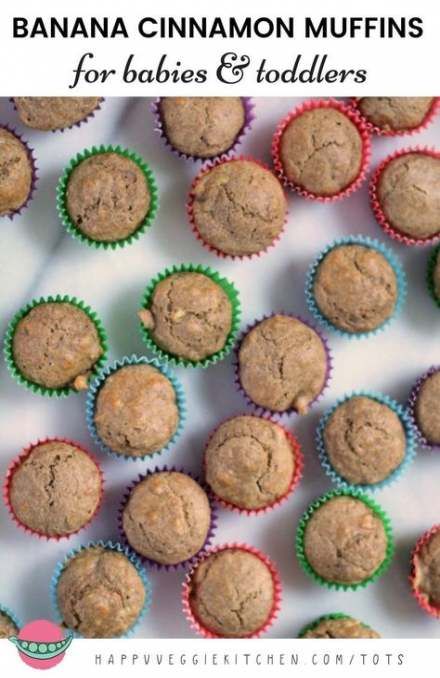
That small amount of engagement with the food can really help a child become interested in it. Give them a place to put the peels, like a little bowl, too.
Frequently Asked Questions
How much banana can a baby eat?
A baby’s appetite should be trusted, so baby can have as much banana as you have to offer and they are interested in unless there is an adverse effect. Start with offering a smaller portion to avoid food waste and allow more as baby cues.
Can babies have banana at night?
Bananas contain a type of carbohydrate that is a slow releasing starch. This means that the natural sugars are digested more slowly so it’s less likely to cause a sugar spike. It is an easy and affordable bedtime snack.
Do bananas cause constipation?
Unripe bananas can aggravate constipation. It is less of a concern with very ripe bananas, which are rich in soluble fiber.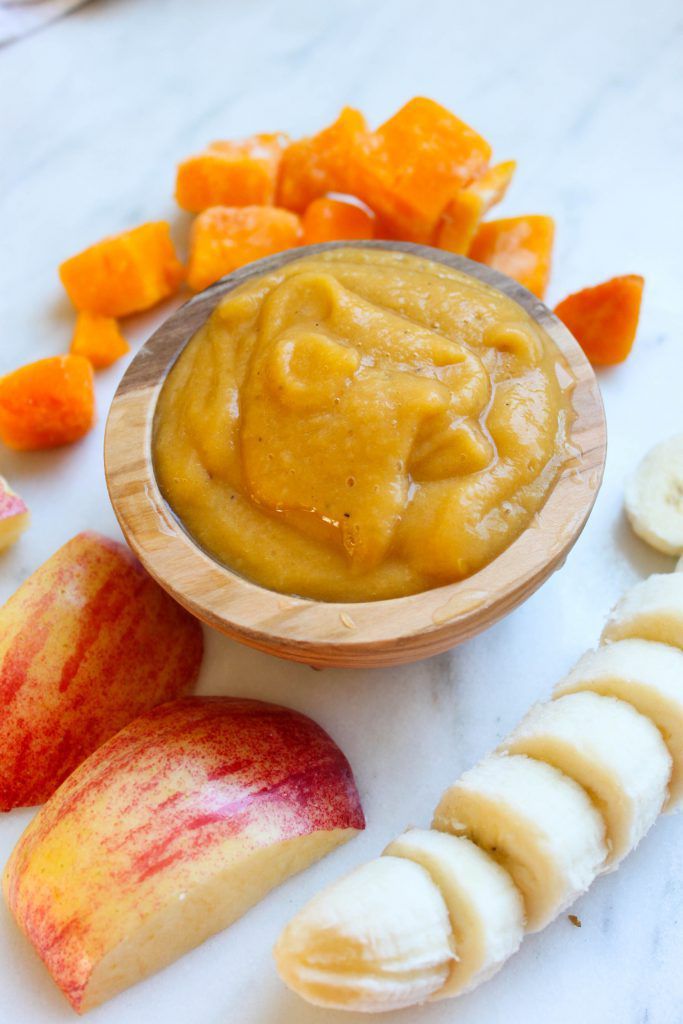 (Pair it with liquids or healthy fats to help it move through the system if you are at all concerned.)
(Pair it with liquids or healthy fats to help it move through the system if you are at all concerned.)
Banana Recipes to Try
Banana Puree Baby Food
Use a ripe banana with at least some brown spots for the best flavor in this puree.
Get the recipe
Best Banana Yogurt
This recipe make enough for 2-4 servings of yogurt, depending on the appetite of your child. See the Notes at the bottom for storage tips if you have leftovers. You can also cut the recipe in half to make a smaller amount.
Get the recipe
The Best 2-Ingredient Pancakes (Baby and Toddler Approved)
This recipe makes one small batch of super tender 2-Ingredient Pancakes. It usually makes 1-2 little-kid-size servings. To make more, simply double the recipe. These are delicate pancakes with a texture that's sort of custardy like French toast, so be gentle when flipping them.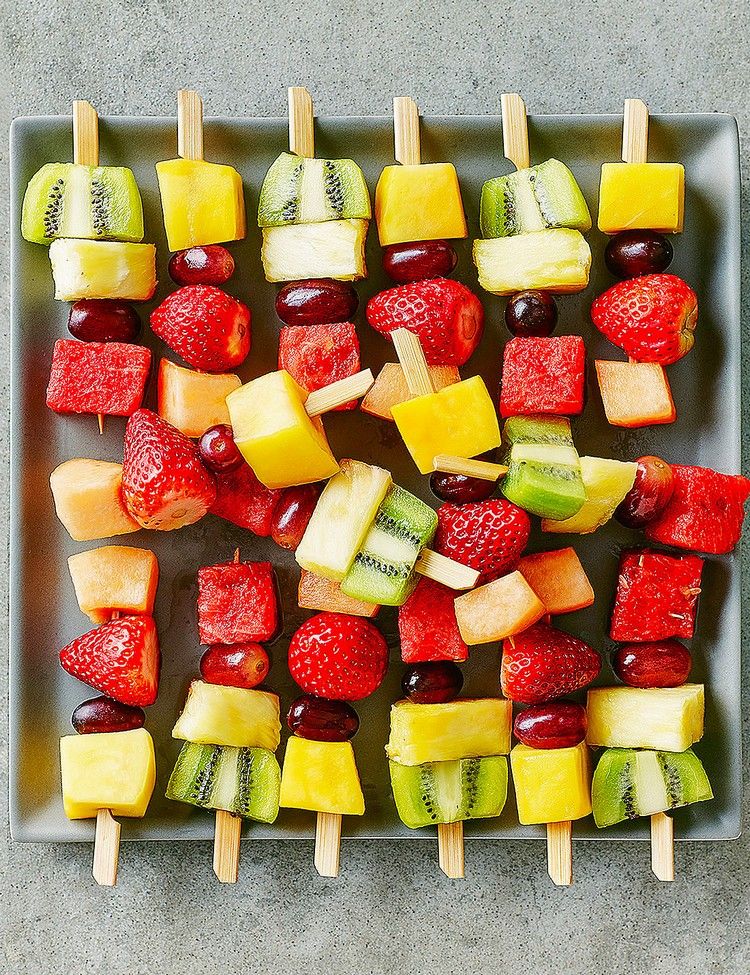 See the NOTES at the bottom for the flavor variations.
See the NOTES at the bottom for the flavor variations.
Get the recipe
Banana Oatmeal Pancakes (with Extra Protein)
Very ripe (with brown spots) bananas will give these pancakes the best flavor. Dice them up or serve whole, according to how the kids prefer to eat them.
Get the recipe
Best Banana Spinach Pancakes
This is a thin batter that makes tender pancakes. Be sure to let them cook until the surface is almost entirely firm before you flip them over.
Get the recipe
Quick Caramelized Bananas
You can easily double this recipe to feed more!
Get the recipe
Sugar-Free Banana Muffins
Be sure to use very ripe bananas (with lots of brown spots!) for the best flavor and natural sweetness.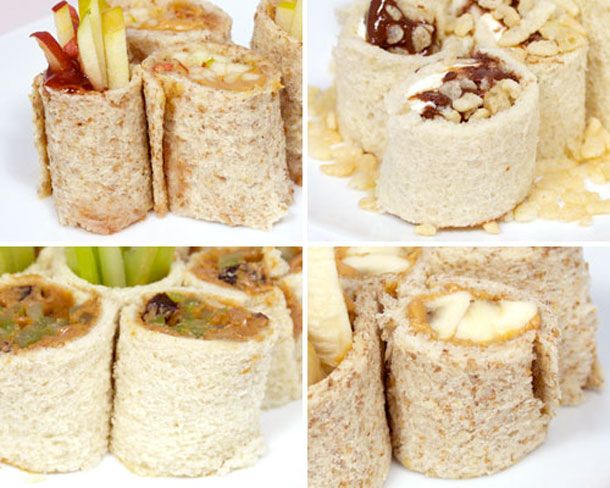 (I updated this recipe December 2020 to ensure the most reliable results. The original version of this recipe is the “Egg-free” option in the Notes if you loved that. In the main recipe, I reduced the oil, added an egg, increased the baking soda a smidge, and reduced the baking time. They’re great!)
(I updated this recipe December 2020 to ensure the most reliable results. The original version of this recipe is the “Egg-free” option in the Notes if you loved that. In the main recipe, I reduced the oil, added an egg, increased the baking soda a smidge, and reduced the baking time. They’re great!)
Get the recipe
Simple Green Smoothie
Frozen bananas give the smoothie a creamy, naturally sweet base, though you can make this with a fresh banana as long as the other fruit is frozen. It’s easy to add whatever berries or fruit you have on hand, so customize it for your kiddo.
Get the recipe
Healthy Banana Cookies (to Share with the Kids)
These are an easy whole grain cookie to share with the kids—they're a great baby cookie! Try them for snack, dessert, or as a breakfast cookie
Get the recipe
Banana Bread Oatmeal (to Share with the Kids)
When you use a really ripe (or over ripe) banana in this recipe, it tastes so much like banana bread—but is much faster! See the options for which toppings make this even more delish.
Get the recipe
Best Tips for Success
- Follow baby’s lead when it comes to appetite.
- Avoid underripe bananas if concerned about constipation.
- Try Banana Puree, mashed bananas or baby led weaning style bigger pieces of bananas for babies around age 6 months.
- Once a baby is about 9 months and can pick up small pieces of food, you can offer smaller pieces of banana.
- Banana pieces should be soft and ripe, rather than unripe and too hard.
- Try bananas in smoothies, oatmeal, yogurt, pancakes, and muffins.
- You may also like Oranges for Baby, Apple Puree, Carrot Puree, ABC Muffins, and my Master List of Baby Food Recipes.
I’d love to hear your feedback on this post, so please comment below to share!
Prep Time 5 minutes
Total Time 5 minutes
Author Amy Palanjian
Cuisine American
Course Baby Food
Calories 105kcal
Servings 1 -2
- ▢ 1 banana (choose a ripe banana with some brown spots for best flavor)
Banana Puree
Peel the banana.
 Slice and measure out about 1 cup. Add to a blender. Blend until very smooth, stopping to scrape down the sides as needed. Add a tiny pinch of cinnamon if desired. Serve immediately.
Slice and measure out about 1 cup. Add to a blender. Blend until very smooth, stopping to scrape down the sides as needed. Add a tiny pinch of cinnamon if desired. Serve immediately.
BLW Banana
Wash and dry the banana. Cut it in half, then remove about 1 inch of the peel so baby has plenty of the fruit to try but it wont be slippery since they can hold the peel.
Banana Finger Food
Peel and slice the banana. Break each slice into three segments by pushing slightly on the middle of the slice. This is usually less slippery than dicing up.
Banana Slices for Toddlers
Peel and slice the banana. Cut a slit in the side of each slice and let your toddler finish peeling.
Banana Smoothie
Add 1 ripe frozen banana to a blender with 1 cup milk. (Use nondairy milk for babies under age 12 months.) Add 1 teaspoon hemp seeds and a small handful of spinach if desired. Blend well.
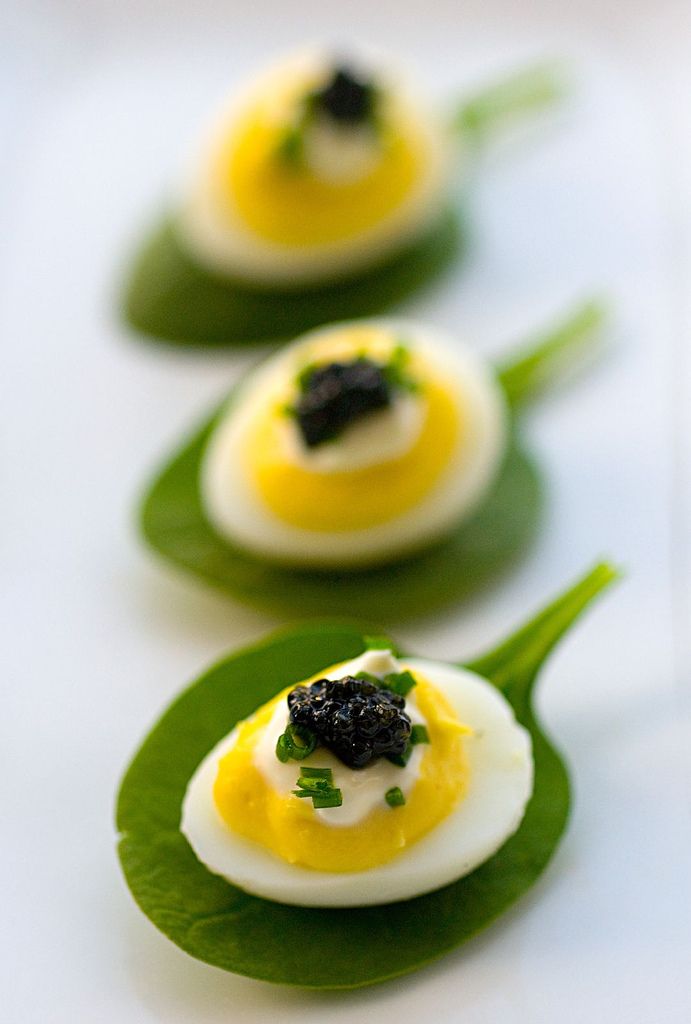 Serve in a straw cup or a reusable pouch.
Serve in a straw cup or a reusable pouch.
Banana Milk
Add 1 ripe banana to a blender with 1 cup milk. (Use nondairy milk for babies under age 12 months.) Blend well and serve in a straw cup or a reusable pouch.
- Follow baby’s lead when it comes to appetite.
- Avoid underripe bananas if concerned about constipation.
- Try Banana Puree, mashed bananas or baby led weaning style bigger pieces of bananas for babies around age 6 months.
- Once a baby is about 9 months and can pick up small pieces of food, you can offer smaller pieces of banana.
- Banana pieces should be soft and ripe, rather than unripe and too hard.
- Try bananas in smoothies, oatmeal, yogurt, pancakes, and muffins.
Serving: 0.5g, Calories: 105kcal, Carbohydrates: 27g, Protein: 1g, Fat: 1g, Saturated Fat: 1g, Polyunsaturated Fat: 1g, Monounsaturated Fat: 1g, Sodium: 1mg, Potassium: 422mg, Fiber: 3g, Sugar: 14g, Vitamin A: 76IU, Vitamin C: 10mg, Calcium: 6mg, Iron: 1mg
Tried this recipe?Rate in the comments and tag @yummytoddlerfood on IG!
Banana Baby Food: 8 Delicious Ways
Home » Feeding Style » Baby Food Purees » Stage Two » Banana Baby Food – 8 Delicious Ways
Bananas make a great and versatile first food for babies.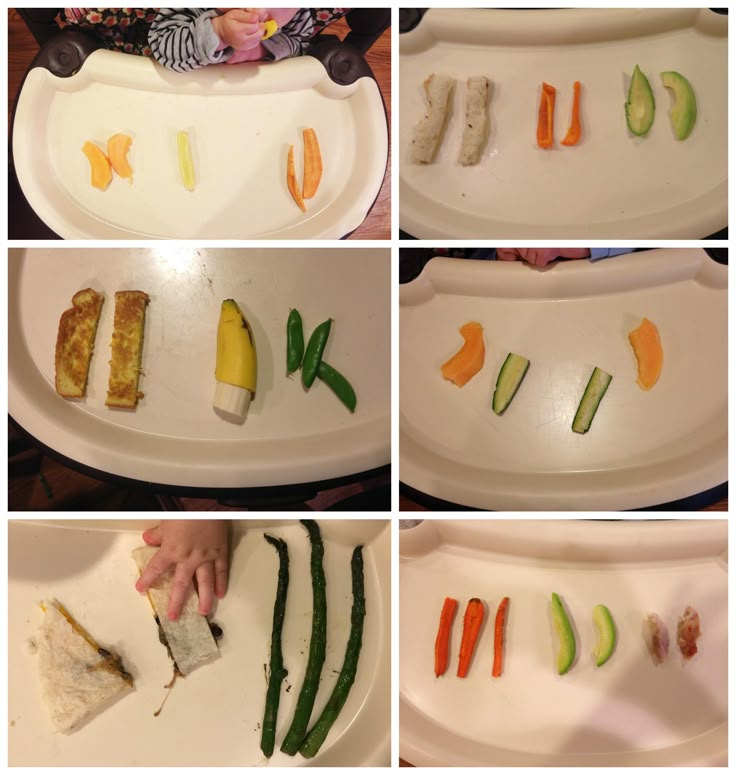 They can be made into a baby food puree, mashed into a chunky puree, used as a finger food for baby, or prepared for baby-led weaning. These 8 banana baby food ideas are also simple, healthy, and quick to make. This guide is perfect for babies 4-6 months and up!
They can be made into a baby food puree, mashed into a chunky puree, used as a finger food for baby, or prepared for baby-led weaning. These 8 banana baby food ideas are also simple, healthy, and quick to make. This guide is perfect for babies 4-6 months and up!
Medically reviewed by Jamie Johnson, Registered Dietitian Nutritionist (RDN)
Bananas For BabyBananas are loaded with essential nutrients for a growing baby and are one of the top first foods for babies!
This guide will give you 8 easy ways to incorporate bananas 🍌 into your baby’s diet. You can serve them as a baby food puree, smashed, finger food for baby-led weaning, made into 3-ingredient pancakes, or even as a simple baby-friendly smoothie. These recipes are great for babies 4-12 months old!
First time making homemade baby food? Then, I would suggest that you start by reading my very in-depth Guide on how to Make Homemade Baby Food – which goes over all the important information such as the best cooking tools to have on hand, safe storage, how to know when baby is ready for solids, how to introduce purees, the best first foods for baby, and more! If you are doing Baby-Led Weaning, then be sure to check out my Complete Guide to Baby-Led Weaning – which covers what exactly is baby-led weaning, to every parent’s concern of baby-led weaning and choking, this guide goes over it all. I will also share how to know when baby is ready for BLW, the top 10 best first foods, a helpful sample blw feeding schedule, helpful tools to have on hand, and much much more!
I will also share how to know when baby is ready for BLW, the top 10 best first foods, a helpful sample blw feeding schedule, helpful tools to have on hand, and much much more!
Want more information? Then make sure to check out my best-selling cookbook for even more information and recipes!
Banana for Baby Video
Watch this video to see how to make serve bananas to your baby!
Benefits of Banana For BabyBananas are a great first food for babies because they are loaded with essential nutrients for a growing baby. They are a good source of fiber, vitamin C, manganese, and potassium, and they are high in vitamin B6.
- Good Source of Potassium: Potassium is a crucial nutrient for active babies as it acts as an electrolyte that manages hydration levels, helps nutrients reach cells, removes waste from cells, and helps maintain a normal heartbeat. It’s also important for muscle contraction.
- Great for Digestion Health: Banana fiber helps prevent constipation, bloating, and other unwanted digestive issues in babies.
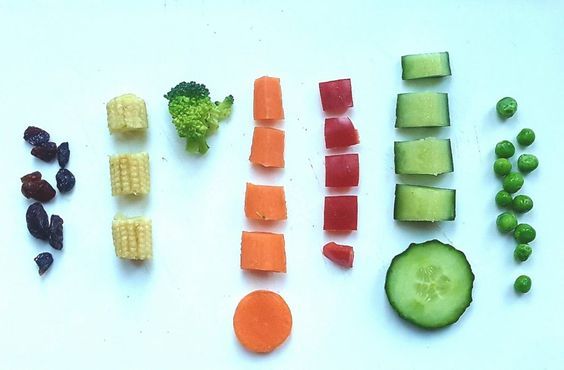
- Boosts Mood: Bananas also contain the amino acid tryptophan and vitamin B6 that may help boost your baby’s happy hormones, and there is nothing better than a happy baby!
Whether you are starting your baby on purees or doing baby-led weaning, bananas are an amazing first food for your baby! When a baby can start on solids is determined by their own rate of development, which generally comes between 4-6 months of age for purees and at or after 6 months for baby-led weaning. Some of the developmental milestones your baby need to reach in order to start solids include: if your baby has solid control of their head and neck, if your baby has doubled their birth weight, and if your baby is reaching for or opening their mouth when you eat (see my guide here). Before you start your baby on purees, you should consult with your pediatrician to make sure your child is developmentally ready.
Are BANANAS A CHOKING HAZARD FOR BABIES?No. Since bananas are inherently soft, they are not typically included among the foods that are a common choking hazard for babies. However, if the banana is not ripe and ready to eat, the flesh will be harder and pose a higher choking risk for your baby. Therefore, it is best to serve your baby strips of banana or mashed banana. When selecting a banana for baby, look for one that is ripe, soft (but not mushy), and has a few small brown spots. As with any food, make sure you supervise your baby while they are eating.
Since bananas are inherently soft, they are not typically included among the foods that are a common choking hazard for babies. However, if the banana is not ripe and ready to eat, the flesh will be harder and pose a higher choking risk for your baby. Therefore, it is best to serve your baby strips of banana or mashed banana. When selecting a banana for baby, look for one that is ripe, soft (but not mushy), and has a few small brown spots. As with any food, make sure you supervise your baby while they are eating.
While the most popular option is adding cinnamon to a banana baby puree, you can also add a pinch of cloves, nutmeg, cardamom, fresh mint, fresh basil, freshly grated ginger, or even allspice. If you’re serving baby chunks of banana, you can sprinkle a small pinch of cinnamon, nutmeg, or cloves on top.
DO BANANAs CAUSE CONSTIPATION?Yes and No! Super clear answer, I know 😉. Unripe green bananas are high in resistant starch, which are resistant to digestion and may cause constipation in babies.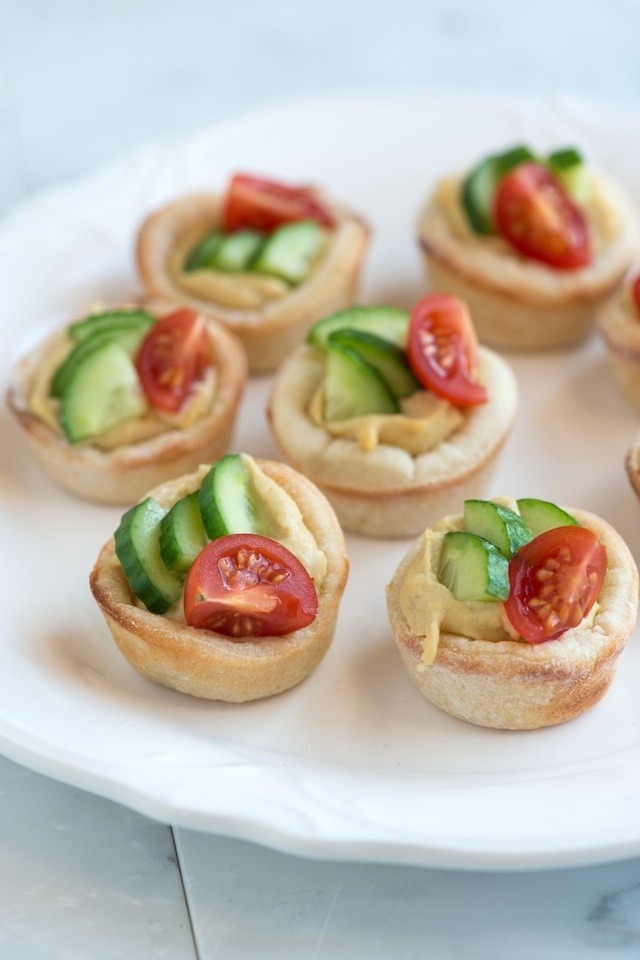 But ripe yellow bananas with a few brown spots actually have the opposite effect due to higher sugar content and may even help your baby go to the bathroom. Just remember to serve bananas in moderation to your baby, as too much fiber can plug your baby up.
But ripe yellow bananas with a few brown spots actually have the opposite effect due to higher sugar content and may even help your baby go to the bathroom. Just remember to serve bananas in moderation to your baby, as too much fiber can plug your baby up.
You can store baby purees in the fridge for 2 days and in the freezer for up to 2 months. It helps to add a small squeeze of lemon juice into the puree before storing it so the puree doesn’t turn brown. Handheld bananas for baby-led weaning will have to be discarded after serving.
How to Introduce Banana to BabyThere are several ways to prepare bananas for baby. Here are 8 of my favorite ways:
- Smooth Baby Puree (4-6+ months)
- Chunky Baby Puree (6+ months)
- Baby Cereal with Banana & Cinnamon (4-6+ months)
- Broken into Chunks (6+ months)
- Handheld Banana (6+ months)
- Banana Strips with Hemp Seeds (9+ months)
- Banana Smoothie (9+ months)
- Easy Banana Pancakes (6-9+ months)
Looking for more easy baby-led weaning and puree recipes? Then be sure to check out my favorite ways to serve apples and avocados to baby!
Smooth Banana PureeThis is an easy, 10-Second Stage One puree recipe for your baby!
Instructions: Place a banana or two into a blender and puree until smooth and creamy. If you want to freeze, add a small squeeze of lemon juice into the puree to help keep it from browning.
If you want to freeze, add a small squeeze of lemon juice into the puree to help keep it from browning.
Add a little baby cereal and a pinch of cinnamon to the pureed banana for an effortless yet tasty meal!
Instructions: Pour some pureed banana (see above) into a small bowl and add a few ounces of premixed or homemade baby cereal. Mix until combined. Add a pinch of cinnamon before serving.
Chunky Banana PureeThis is an easy-peasy way to expose your baby to small chunks of food that you can control the size of. This yummy recipe is perfect as a Stage 3 puree to get your baby ready for finger foods. You can also serve this when you think your baby is ready to try self-feeding.
Instructions: Place the banana on a cutting board and mash it with the back of a fork until mashed but still chunky. Spoon into a baby bowl and serve.
When you break the banana up into chunks instead of cutting with a knife, the chunks will not be as slippery, and your baby will have an easier time holding onto them. If your baby is getting frustrated trying to pick up the pieces of slippery banana, hand them the banana chunks and let them continue feeding themselves. You can also try rolling the banana in breadcrumbs or crushed Cheerios to help your baby handle it better.
Instructions: Peel a banana, and using your fingernails, break the banana into chunks along the seem of the banana. It should easily break into chunks.
Handheld BananaThis handheld version of a banana is an ideal way for your baby to have a handle for the banana as they eat the other end.
Instructions: Cut a 4-5 inch section of banana off from the top. Cut around the peel, leaving roughly 1-2 inches of exposed banana. Do not cut all the way through the banana, just the peel.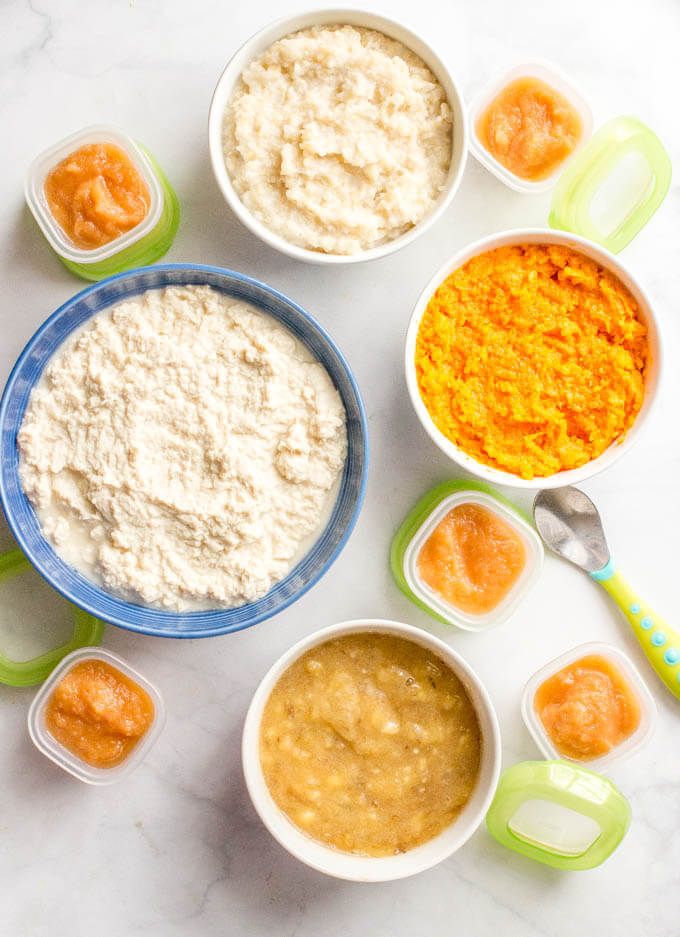 Then you can peel the peel away and hand the banana to your baby.
Then you can peel the peel away and hand the banana to your baby.
This recipe is a fun way to let your baby explore different textures and tastes. You can roll strips of banana in hemp seeds, crushed cheerios, puffs, or breadcrumbs.
Instructions: Cut the banana into strips and roll them in a little bit of toppings.
Banana SmoothieThis simple smoothie is perfect for babies that are drinking from a sippy or baby cup. It is filled with banana, ice, and a small amount of formula or breast milk.
Instructions: Place a banana, a couple of ice cubes, and 1/4 cup of liquid into a blender. You can add in a pinch of cinnamon or 1/2 teaspoon of nut butter in there as well if you want. Blend until the texture is just right. You don’t want it too thick, or your baby might have a hard time drinking it. Transfer to a sippy or baby cup and serve.
Easy Banana PancakesThese 3-ingredient pancakes are great for babies, toddlers, as well as kids! It’s the perfect food to have on hand if you are doing Baby-Led Weaning, as you can serve them plain or with a smear of cream cheese, avocado, or nut butter on top.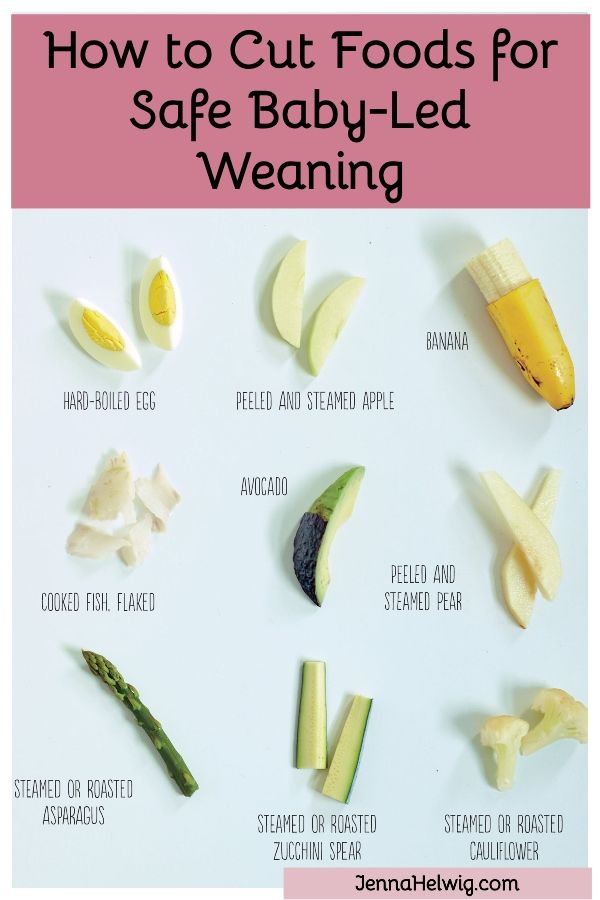
Instructions: In a medium bowl, mix mashed banana, an egg, and whole wheat flour. I also like adding a pinch of cinnamon or pumpkin pie spice for some extra flavor. Cook as you would any pancake and serve.
Tips- Picking Bananas: When selecting a banana for your baby, look for one that is ripe, yellow, soft (but not mushy), and has a few small brown spots on it. Do not serve your baby green or underripe bananas.
- Freezing Banana Puree: You can freeze pureed or mashed bananas. The key is to freeze the bananas right away and add a few drops of fresh lemon juice to help prevent them from getting discolored.
- Roasted Banana + Rosemary Puree
- No-Cook Banana Peach Baby Food Puree
- Peanut Butter Banana Baby + Toddler Melts
- Sweet Potato, Banana + Cinnamon Baby Food Puree
- Banana, Cherry + Beet Baby Food Puree
- 5-Minute Banana, Blueberry + Avocado Baby Food Puree
- Blender or Food Processor
- Freezer Tray
- Storage Containers for Fridge
- Banana
- Hemp seeds
- Nut butter
- Whole wheat flour
- Cinnamon
Smooth Baby Food Puree
- 1-2 bananas
Baby Cereal with Bananas & Cinnamon
- 1/4 cup pre-made baby cereal (from a box or homemade)
- 1/2 banana
- 1 pinch cinnamon
Chunky Baby Food Puree
- 1/2 banana
Chunks of Banana
- 1/2 banana
Handheld Banana
- 1/2 banana
Banana Strips Rolled in Hemp Seeds
- 1/2 banana
- 1 tbsp hemp seeds, crushed cheerios, puffs or breadcrumbs.
Banana Smoothie
- 1 banana
- 4-5 ice cubes
- 1/4 cup liquid (breastmilk, formula or water)
- 1/2 tsp nutbutter (optional)
- 1 pinch cinnamon (optional)
Easy Banana Pancakes
- 1 banana, mashed
- 1 egg
- 2 tbsp whole wheat flour
- 1/8 tsp cinnamon
Smooth Baby Food Puree
Place the banana into a blender or food processor and puree until smooth and creamy, roughly 60-90 seconds, scraping down sides if needed.
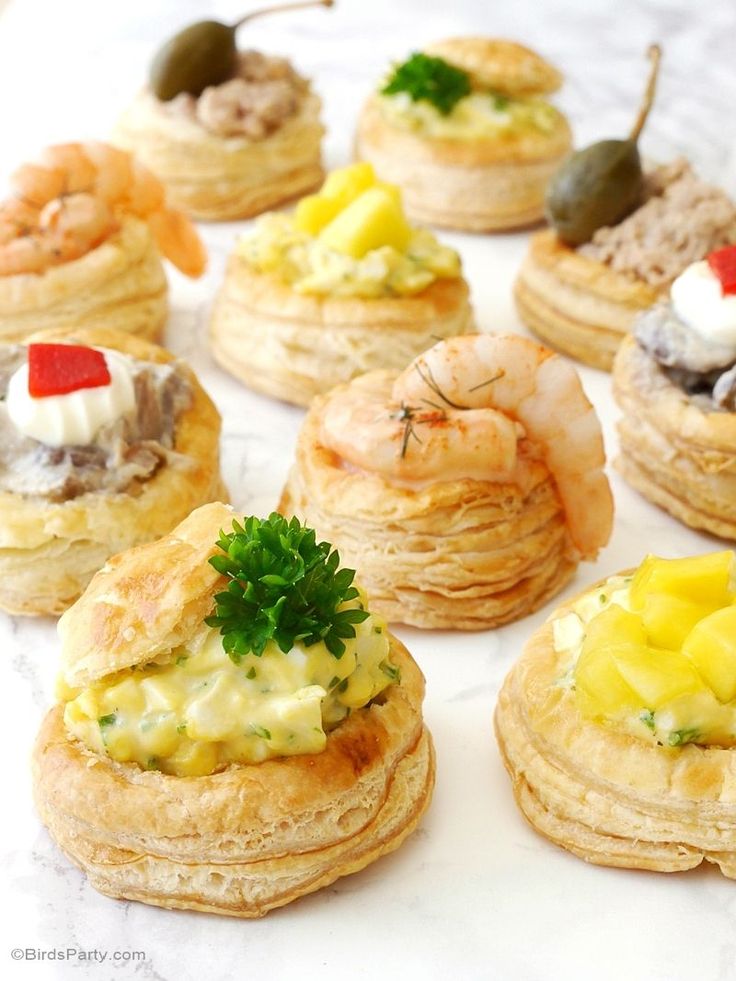 If the puree is too thick, add in some liquid (breastmilk, formula or water) in tablespoon increments until you have your desired consistency. If you want to freeze the puree, add a small squeeze of lemon juice into the puree to help keep it from browning.
If the puree is too thick, add in some liquid (breastmilk, formula or water) in tablespoon increments until you have your desired consistency. If you want to freeze the puree, add a small squeeze of lemon juice into the puree to help keep it from browning.
Baby Cereal with Bananas & Cinnamon
On a cutting board, mash a banana. In a small bowl, add the mashed banana to the made baby cereal. Add a pinch of cinnamon to the top and serve.
Chunky Baby Food Puree
Place the banana on a cutting board and mash with the back of a fork until mixed but yet still chunky. Spoon into a baby bowl and serve.
Chunks of Banana
Peel half of a banana and using your fingernails, break the banana into chunks along the seem of the banana. It should easily break into chunks
Handheld Banana
Cut a 4-5 inch section of banana off from the top. Cut off the peel, leaving roughly 1-2 inches of exposed banana.
 Do not cut all the way through the banana, just the peel. Then you can remove the peel away and hand the stem of the banana to baby.
Do not cut all the way through the banana, just the peel. Then you can remove the peel away and hand the stem of the banana to baby.
Banana Strips Rolled in Hemp Seeds
Banana Smoothie
Place banana, ice cubes and liquid into a blender. Add in cinnamon and nut butter, if using. Blend for 60 seconds and serve. If the smoothie is too thick, add in additional liquid as you don’t want it too thick or baby might have a hard time drinking it.
Easy Banana Pancakes
In a medium bowl mix together mashed banana, an egg, whole wheat flour and cinnamon. In a large non-stick skillet preheated on medium heat, pour 1/8 cup of batter into the skillet. Let cook roughly 3 minutes on the first side, flip and cook for 2 more minutes or until golden brown.
Age: 4 months and up
Did you make this recipe?
Tag @babyfoode on Instagram and hashtag it #babyfoode!
Pin Recipe Email a Friend
Bananas in baby food - Encyclopedia Baby food
Levchuk Victoria ©
For the last 20 years, bananas have been sold in any store.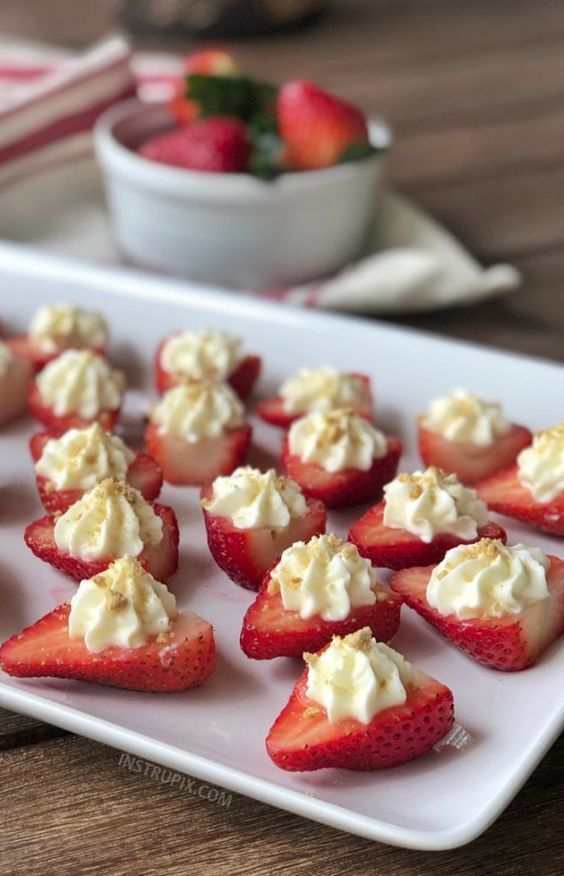 Once an expensive fruit, it is now inexpensive and already considered a local product. Since the banana is available all year round and does not have to be prepared for a child, it has won the love of many parents.
Once an expensive fruit, it is now inexpensive and already considered a local product. Since the banana is available all year round and does not have to be prepared for a child, it has won the love of many parents.
In our article you will find out when a banana is introduced into complementary foods, whether a banana can be given to children and at what age, how to introduce it into complementary foods, etc. Bananas in baby food are an excellent source of vitamins and minerals, perfect for baby's first complementary foods at 8-10 months.
What are bananas?
Contents:
Banana is a perennial herbaceous plant that belongs to the Banana family. Edible in a plant is its fruit with the same name.
There are about 500 varieties of bananas. But not all are known, and some varieties are not cultivated. The most famous varieties of bananas:
1) The most common variety is Cavendish. The fruits are 15 to 25 cm long, their peel is yellow, sometimes greenish.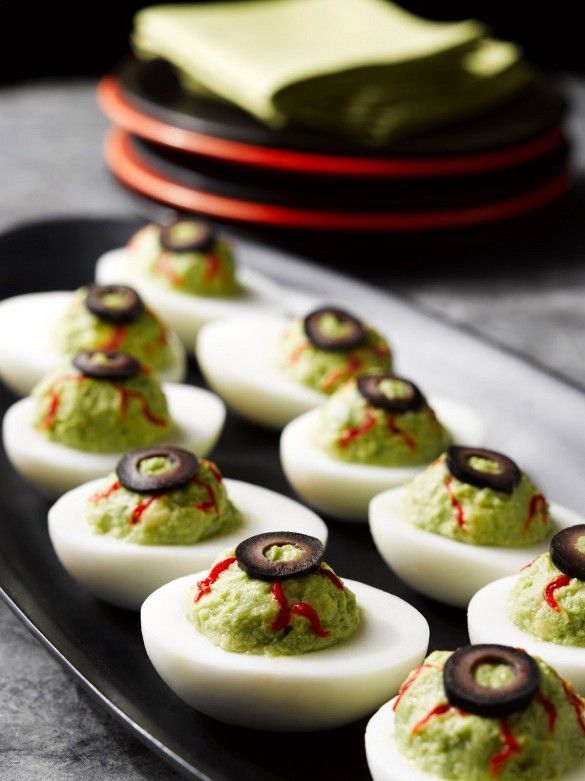 When the banana peel is completely yellow with brown spots, the banana has reached its maximum maturity. The black skin, soft texture of the fruit is a sign of overripeness. Worldwide consumption of bananas of this variety is much greater than that of any other fruit from the tropics. This variety is mainly imported to Russia.
When the banana peel is completely yellow with brown spots, the banana has reached its maximum maturity. The black skin, soft texture of the fruit is a sign of overripeness. Worldwide consumption of bananas of this variety is much greater than that of any other fruit from the tropics. This variety is mainly imported to Russia.
2) Small bright yellow fruits up to 7.5 cm long, called baby banana or finger banana, are also imported into our country. These babies have a rich sweet taste, excellent aroma, creamy texture. They are eaten raw, baked, used in salads and other dishes. This variety of bananas is much more expensive than the others.
3) Banana Barro square, yellow skin, cream colored flesh. Can be eaten fresh or used in cooking.
4) Java Blue Banana or Ice Cream Blue Banana. This banana is small, thick, with a blue-green skin, and has a sweet, creamy taste.
5) Manzano banana or apple banana has a rich strawberry-apple flavor. Its fruits are short and plump.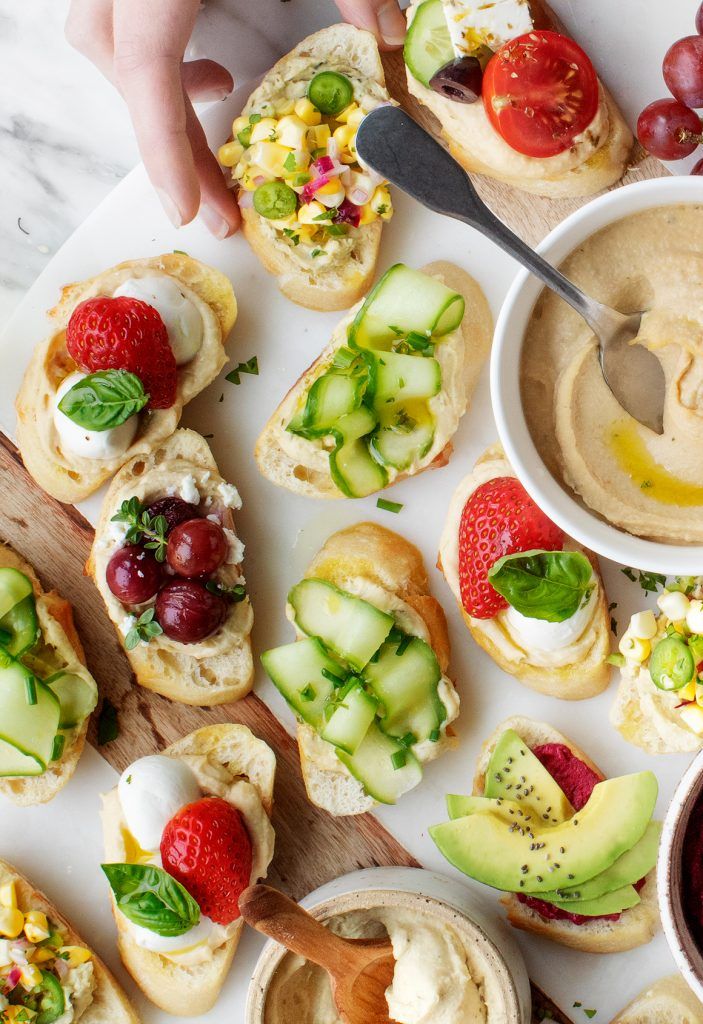
6) Plantain banana is an elongated fruit with a thick skin. Depending on the stage of ripening, the peel of this banana changes shades from light green to black. The flesh of Plantain is light pink. It is used for cooking and is not edible raw. In the Caribbean and Mexico, it serves as a substitute for potatoes. Plantain is fried or stewed, and when the fruit is fully ripe, it can also be used to make desserts.
7) A red banana is sweeter than a yellow one. Ripe fruits are maroon and purple, the flesh is pink.
Banana Season
Although in Russia bananas are considered to be predominantly a winter treat, bananas do not have a specific season. In warm countries, it bears fruit all year round.
The climate in Russia is not suitable for growing bananas. Therefore, all bananas come through the import of these fruits. However, in the south of Russia, in Sochi and its environs, this plant is grown. The fruits do not have time to ripen, as the air temperature in winter is below 0C.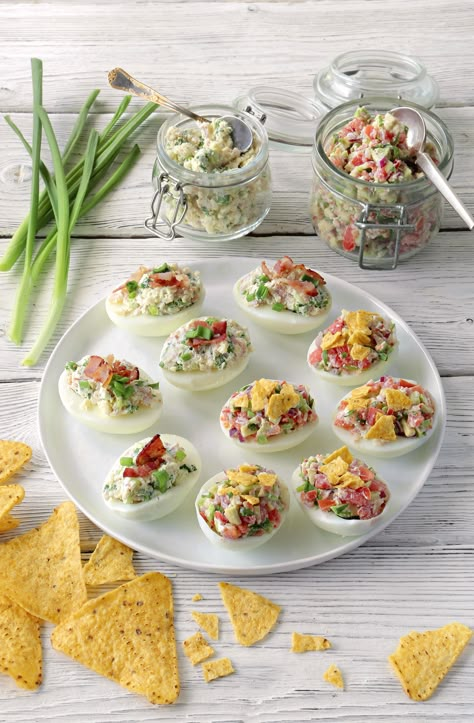 Therefore, in the south, primarily bananas are grown as ornamental plants.
Therefore, in the south, primarily bananas are grown as ornamental plants.
History of the banana
Banana is a plant known since ancient times. Its geographical origin was first determined by Academician Vavilov N.I. in his work Centers of Origin of Cultivated Plants. The banana is native to the Malay Archipelago. Initially, Malaysians ate the fruit of this plant along with fish.
Malaysians took these fruits with them on their travels in the Pacific Ocean. So this delicious delicacy has become widespread. In the XVII-XI centuries BC. in the monument of Indian culture, the Rig Veda, there are references to the banana. These are the earliest records of this plant in written sources. Since the cultivation of bananas in Russia was not possible, it was possible to taste the fruits of this plant only through its import into the country.
However, bananas do not tolerate long-term transportation: the process of fruit rotting begins at t above 14C. And only in the 19th century, when cargo ships equipped with refrigeration units appeared, did a Russian person taste a banana for the first time.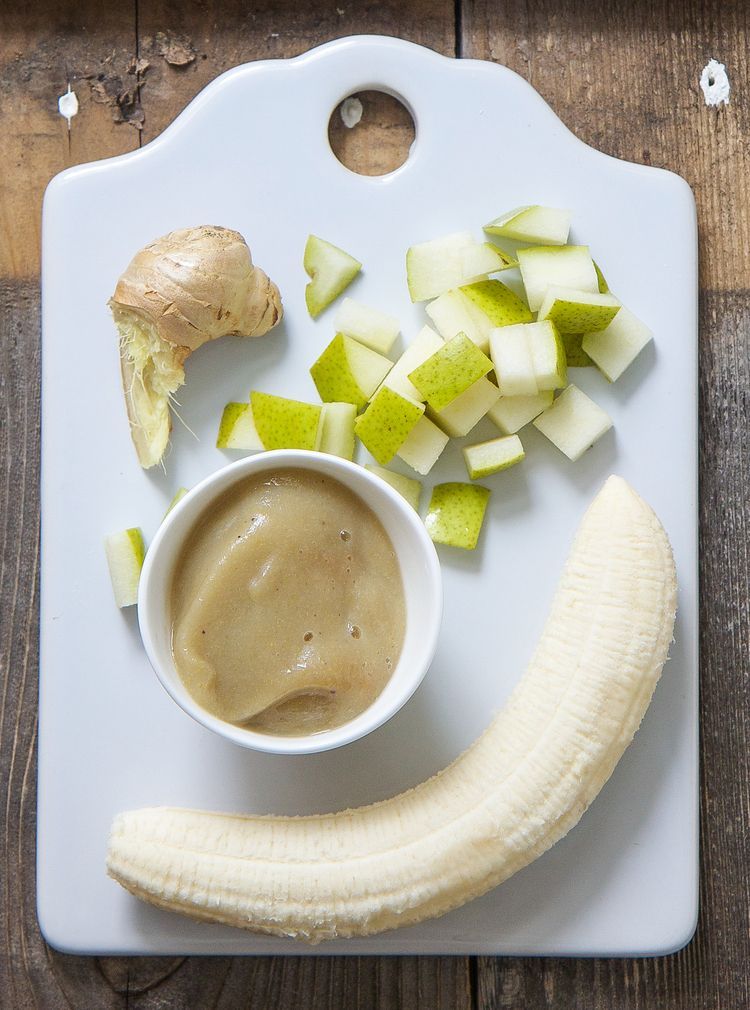 But still, this exotic fruit was not available to the masses, and among those who could afford it, it was not particularly popular. Obviously, during the First World War, as well as during the Civil War, there was no time for bananas. Large quantities of bananas began to be purchased under Stalin, who fell in love with these fruits. Under him, this sweet fruit became widespread throughout the USSR.
But still, this exotic fruit was not available to the masses, and among those who could afford it, it was not particularly popular. Obviously, during the First World War, as well as during the Civil War, there was no time for bananas. Large quantities of bananas began to be purchased under Stalin, who fell in love with these fruits. Under him, this sweet fruit became widespread throughout the USSR.
Benefits of bananas in baby food
Bananas contain so many important nutrients that it can be considered one of the most perfect foods.
Bananas are an excellent source of the key electrolyte potassium, which is used by muscles and regulates blood chemistry and supports cardiovascular and kidney health. It also supplies the baby with vitamin A, vitamin B6, vitamin B2, vitamin C, calcium, magnesium, sodium, copper, iron and zinc. B vitamins support the health of the immune system, nervous system, hormonal levels, perform basic metabolic functions of the body, and are also necessary for the normal development and functioning of the brain.
Babies love bananas because they have a natural sweetness that intensifies as they ripen, providing kids with plenty of energy for growth and development. In addition, ripe bananas contain pectin, a soluble fiber that aids the digestive system and prevents constipation.
However, it is important to remember that unripe bananas often have the opposite effect and can cause constipation.
Fully ripe bananas are better for the baby because they contain more antioxidants than unripe fruits.
If a child is suffering from a nasty bout of diarrhea, bananas can be helpful in replacing lost electrolytes. Bananas are also included in the Brat diet to improve the condition of the child during diarrhea. Therefore, with constipation, it is best to exclude bananas from the diet.
Food allergies are due to certain amino acids that cause food intolerance or indigestion in some people. Bananas contain simple or benign amino acids that are always digestible. This makes bananas an ideal food for babies due to their easily digestible function.
This makes bananas an ideal food for babies due to their easily digestible function.
And if these benefits weren't enough, then remember that bananas are excellent food for children, since their consumption improves the body's absorption of calcium, which regulates bone growth and skeletal development, and plays an important role in the production of certain hormones. Bananas also contain magnesium and phosphorus, which are necessary for the skeletal health of the child, because magnesium is an extremely important element in regulating energy production within the cell, and phosphorus works closely with calcium to help build strong bones and teeth. Iron and copper, on the other hand, are essential for good blood and hemoglobin levels.
Bananas are also known as natural antacids. They are known to help protect the body from stomach ulcers and gastritis. The reason for this rare and almost unexplored fact is that bananas contain "mucilaginous oily substances" that boost natural mucus production.
When is a banana introduced into complementary foods? The most common question among parents. American pediatricians advise introducing a banana after 6 months, but our Russian pediatricians adhere to an age of 8-10 months, i.e. a banana as the first complementary food is introduced after 8 months. This is explained very simply, firstly, the banana does not grow in Russia, and is considered an exotic fruit, so an allergic reaction is possible. Secondly, the fruit belongs to the sweet fruits.
If the baby tries a tender, sweet and airy banana, then you can forget about the introduction of broccoli or zucchini into the diet, fresh food will be much more difficult than sweet. Therefore, many pediatricians advise introducing vegetables or cereals first, and only then introduce the baby to less sweet and allergenic fruits, such as a green apple.
In Indonesia, the most popular first food for a baby is a banana.
Many exotic fruits in baby food are introduced after 12 months, but bananas are an exception.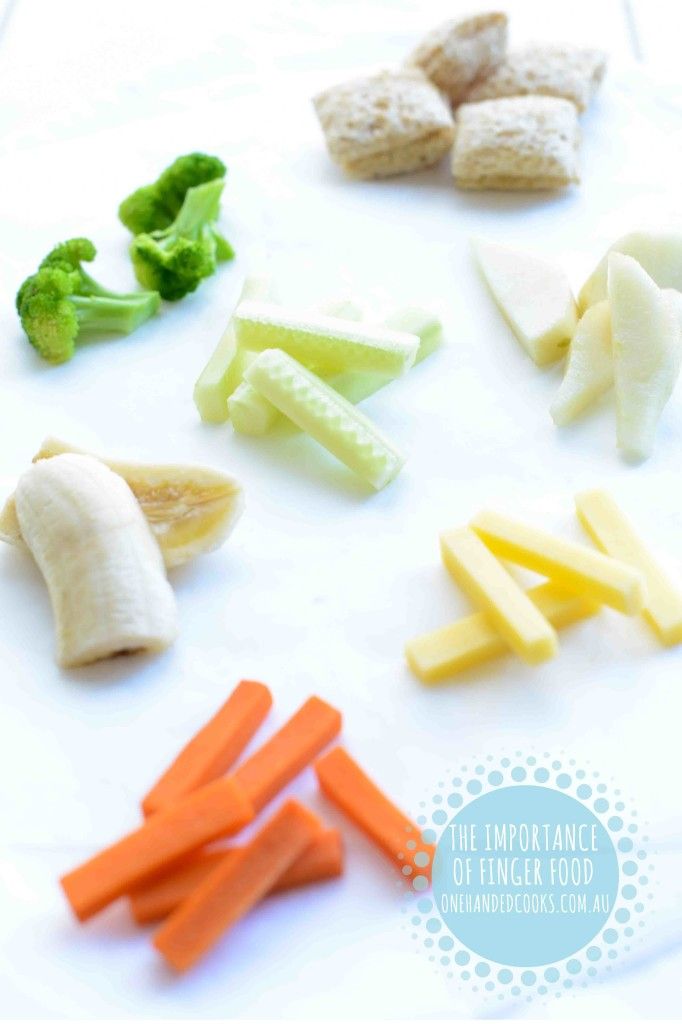 Their wonderful nutritional composition, as well as easy digestion by the child's stomach and incredible ease of preparation, are especially liked by all parents. Moreover, parents like a banana for children as a first food because the fruit can be sucked, crushed, licked, swallowed without chewing. For this reason, a banana is introduced into complementary foods after 8 months, but before the child is 12 months old. However, if the child is prone to allergies, then the fruit is introduced after 12 months.
Their wonderful nutritional composition, as well as easy digestion by the child's stomach and incredible ease of preparation, are especially liked by all parents. Moreover, parents like a banana for children as a first food because the fruit can be sucked, crushed, licked, swallowed without chewing. For this reason, a banana is introduced into complementary foods after 8 months, but before the child is 12 months old. However, if the child is prone to allergies, then the fruit is introduced after 12 months.
The first time a banana for children must be boiled, i. it is necessary to acquaint the baby with thermally processed fruit, for better absorption by the body. After the introduction of the processed banana into complementary foods without allergic reactions, you can introduce the baby to banana puree from fresh fruit.
Banana puree is introduced into the diet as a regular product, first the child is given a taste of ¼ of a teaspoon, then ½ tsp. etc. Complementary foods are introduced about 4-7 days.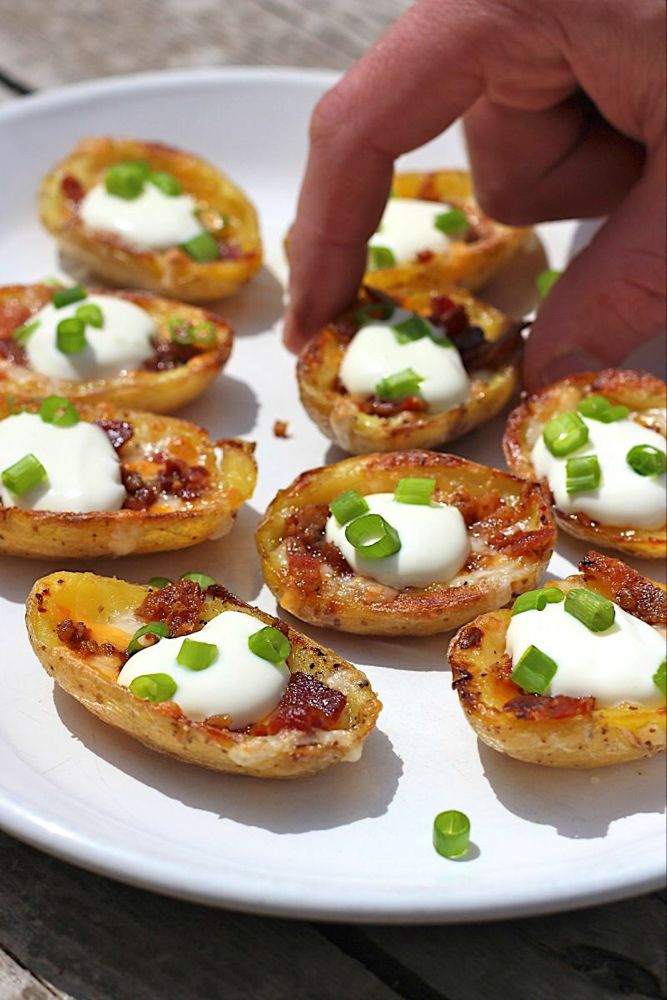 The daily dose of a banana at 8 months is about 80 grams, after up to 12 months about 90-100 grams, the average banana weighs about 126 grams, so you can give your child half a banana for up to a year. It is not worth giving a banana often, especially at first, so the consumption rate is 2-3 times a week.
The daily dose of a banana at 8 months is about 80 grams, after up to 12 months about 90-100 grams, the average banana weighs about 126 grams, so you can give your child half a banana for up to a year. It is not worth giving a banana often, especially at first, so the consumption rate is 2-3 times a week.
By the age of 1.5, a child can eat one medium banana per day, which is about 120-150 grams. From 3 years old, you can give 1 large banana about 200 grams per day and feed up to 5 times a week, from 6 years old you can feed your child 2 bananas per day, which is about 300 grams.
An interesting fact is that if you feed bananas to a child with a cough or cold, the symptoms of the disease increase.
For baby food, it is best to choose a ripe banana, which is more beneficial for digestion, as an unripe banana contains a lot of starch.
The Best Complementary Food
In addition to all the fantastic health benefits of the banana, it is the most favorite natural processed food for children. Fruit in the peel, which does not need to be washed, just peeled and eaten. Therefore, bananas are very popular with parents who travel often, who have little time to prepare a full-fledged second breakfast or afternoon snack. The product takes up little space in the bag, but will fill the baby's tummy by 100% and allow the baby to hold out until a full meal.
Fruit in the peel, which does not need to be washed, just peeled and eaten. Therefore, bananas are very popular with parents who travel often, who have little time to prepare a full-fledged second breakfast or afternoon snack. The product takes up little space in the bag, but will fill the baby's tummy by 100% and allow the baby to hold out until a full meal.
Banana Allergy
Banana is a food with a moderate degree of allergy, so it is necessary to introduce it into the child's complementary foods with caution.
Banana allergy is a hypersensitivity reaction to proteins present in the banana. An allergic reaction when eating a banana can be mild or life-threatening.
If you develop any unpleasant symptoms after taking a banana or food with a banana as a supplement, you should immediately consult a doctor.
Allergy to bananas is acceptable due to the presence of protein chitinase. The human body is unable to destroy chitinase, and this forces the immune system to work, which produces antibodies to allergens.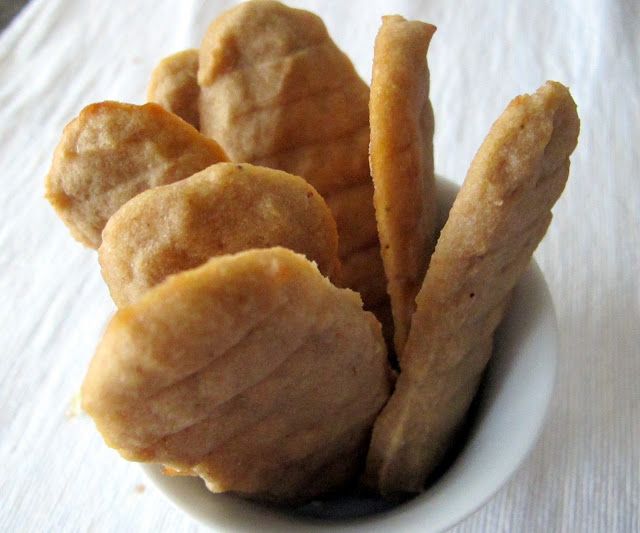 These antibodies additionally produce histamine, which acts on various areas of the body, such as the eyes, nose, gastrointestinal tract, lungs, and skin, to cause unwanted symptoms. Such a reaction is a type 1 allergy, a type of hypersensitivity created by the immune system. Banana protein is also present in avocados and kiwis, so it's not uncommon for those who are allergic to bananas to not respond well to them.
These antibodies additionally produce histamine, which acts on various areas of the body, such as the eyes, nose, gastrointestinal tract, lungs, and skin, to cause unwanted symptoms. Such a reaction is a type 1 allergy, a type of hypersensitivity created by the immune system. Banana protein is also present in avocados and kiwis, so it's not uncommon for those who are allergic to bananas to not respond well to them.
Pollen is another possible cause of banana hypersensitivity. If the baby has an allergic reaction to birch pollen, the chances of a banana allergy are much higher. In some cases, banana allergy occurs when a child comes into contact with fresh fruit. Although cooking a banana may reduce the risk of an allergic reaction in some children.
The surprising fact is that latex can be a trigger for those who are allergic to bananas. This is due to the natural level of chitinase in the rubber tree, the sap of which is used to make latex.
Many people confuse banana allergy with banana intolerance.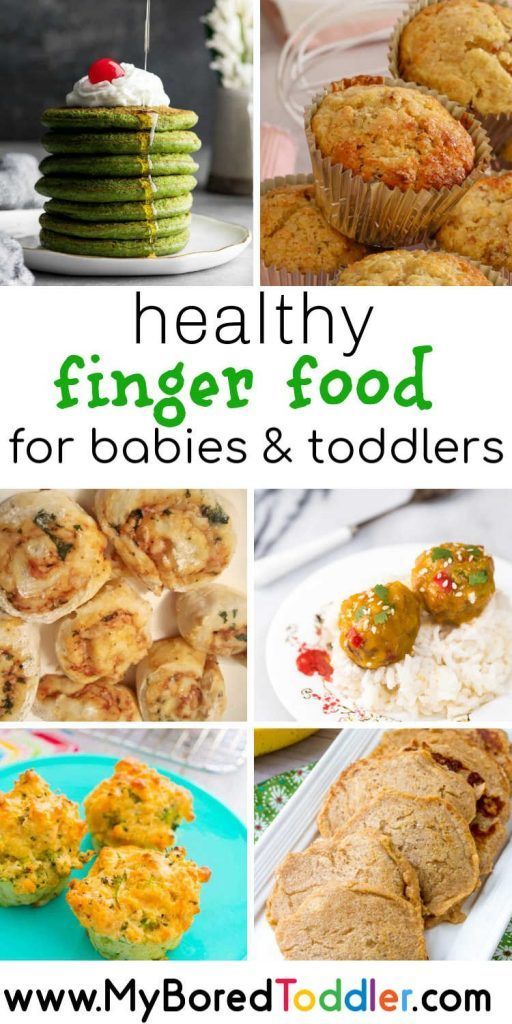 However, these two concepts are not the same, although the symptoms they cause are very similar. It should be noted that banana intolerance symptoms are usually milder than banana allergy symptoms. Under normal circumstances, banana intolerance can take a few days to show up. What's more, banana allergies are more associated with a weakened body's immune system, while intolerance is associated with a weak digestive system.
However, these two concepts are not the same, although the symptoms they cause are very similar. It should be noted that banana intolerance symptoms are usually milder than banana allergy symptoms. Under normal circumstances, banana intolerance can take a few days to show up. What's more, banana allergies are more associated with a weakened body's immune system, while intolerance is associated with a weak digestive system.
Interestingly, not all people are allergic to green and ripe bananas. Some may only be allergic to green bananas and enjoy the delicious taste of ripe bananas without any problem. There are quite a few people who are allergic to both types of bananas. In some cases, people have also been found to outgrow allergic reactions at some point in their lives, but this is not the case for everyone. It's always best to check with your doctor to see if your child can continue eating bananas despite some allergy symptoms.
If a child vomits after eating a banana, this is a fairly important sign of anxiety. Banana allergy in babies also causes rashes. Or, you may find that the skin around the baby's mouth is unusually reddish after eating a banana.
Banana allergy in babies also causes rashes. Or, you may find that the skin around the baby's mouth is unusually reddish after eating a banana.
Urticaria, eczema or reddish spots may also appear. The sensation of itching is also often possible in infants. Sometimes the tongue becomes inflamed, and the mouth and face swell. In many cases, symptoms may appear unambiguously or additionally as problems with the gastrointestinal tract. Keep track of how your baby feels for a few hours after eating bananas. Some common symptoms are nausea, abdominal pain, diarrhea, increased gas and vomiting.
Some children may experience respiratory symptoms after eating bananas, such as shortness of breath, chest tightness, moodiness, wheezing, congestion or runny nose and cough. In severe cases, fainting is also possible.
Cooked bananas are said to be less allergic than raw bananas. When introducing bananas into complementary foods, it is necessary to follow the rule of waiting for 4-7 days.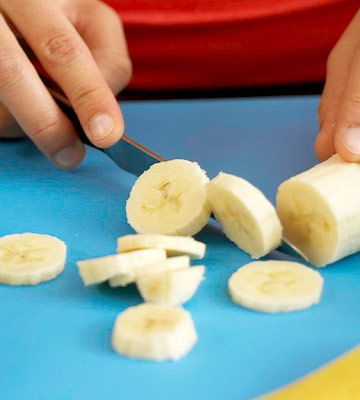
How to choose and store bananas
In order to choose quality bananas, first of all, you need to pay attention to the appearance of the fruit: it should be smooth and matte, the color of a ripe banana is bright yellow. Black dots on the banana peel indicate that the fruit has ripened and is ready to eat. However, the presence of black spots on the peel indicates the onset of rotting of the fetus. Also, do not buy bananas with damaged peels. A grayish skin tone can be found in bananas that have undergone hypothermia.
Bananas should not be stored in the refrigerator as they darken quickly there. The optimum temperature for storing fruits is from 7 to 13 degrees. For faster ripening, the fruits need to be placed in a warmer place. Bananas are best preserved as a whole bunch. Depending on the stage of maturity, bananas keep up to one month. In winter, you should buy bananas in stores, supermarkets, hypermarkets, and not in markets, as there is a risk of finding frozen fruits in open outlets.
Pesticides and bananas
Bananas are usually labeled with manufacturer's name. In addition, bananas often have stickers with numbers on them, which can say a lot about the way bananas are grown. So, codes 4011 and 94011 indicate that these fruits are organic, without chemistry. This should be considered when buying bananas for a child. If the fruit has a sticker of five numbers that starts with the number "8", then it is genetically modified bananas. And if the beginning of the code is the number "3" or "4", then the plant was fertilized with chemical reagents and pesticides.
A shipment of bananas is treated with benzimedazole before being sent to its destination. This substance has a dual effect: it does not allow fungal infections to multiply in bananas and does not allow the fruits to ripen ahead of time.
To ripen bananas that are picked while still green and not ripe, they are treated with the so-called banana gas. Banana gas components are high purity ethylene and nitrogen. Temperature and gas push the fruits to ripen. This gas is harmless and similar to the substance that is released during the natural ripening of a banana.
Temperature and gas push the fruits to ripen. This gas is harmless and similar to the substance that is released during the natural ripening of a banana.
Freezing bananas
I don't know why it is necessary to freeze bananas. They can be purchased at any time in any store at the best price. Although it is possible to freeze a banana, and when the child grows up, then it is necessary. To make natural popsicles, you need a frozen banana cut into small pieces.
It is best to freeze a banana cut into pieces without peel. When defrosted, it may darken slightly and have a runny consistency. You can store a frozen banana for no more than 3 months. Before freezing, you need to decide what the frozen fruit will be used for. If for baking, then it is better to peel and freeze the banana whole, if for ice cream, then peel and cut the banana into small pieces, then freeze, so it will be easier to whip it with a blender.
Banana puree darkens when exposed to air for a long time, so for freezing it is necessary to add a little lemon juice to it (if lemon is included in the child's diet). You can freeze in ice molds. You can store banana puree for no more than 1 month. You can use banana puree mixed with other fresh fruits.
You can freeze in ice molds. You can store banana puree for no more than 1 month. You can use banana puree mixed with other fresh fruits.
Dried bananas
Dried bananas and banana chips are available at the store. Dried bananas are a dried whole product in a special way. Banana chips are a product cut into round pieces that have been dried in a fast way. Dried bananas are high in calories and high in sugar. This must be taken into account when choosing this dried fruit. Dried bananas and banana chips are great substitutes for candy, but should be given in limited amounts, especially to children under 3 years of age.
Canning bananas
In general, bananas are preserved, although I don't see the point, since bananas are available all year round in stores. But you can make jam, jam, marmalade, candied fruit, marshmallow, banana puree from a banana (sugar is used in the recipe).
Contraindications
1) Babies under three years of age should be given a banana with caution, as it is difficult for the digestive system to absorb such a product, and there is also a risk of developing allergies.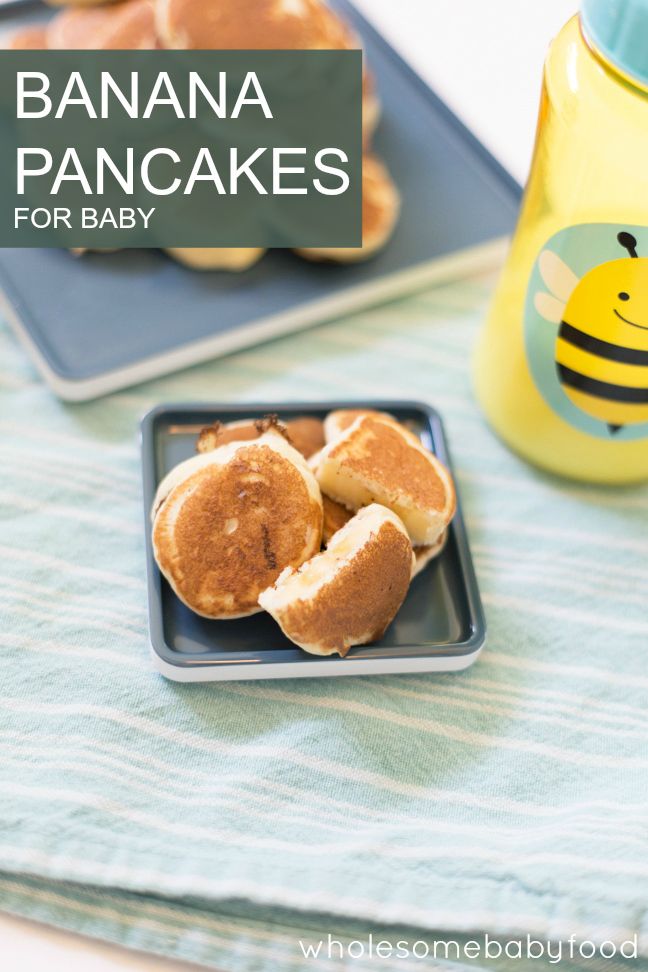
2) When eating a large amount of bananas, an excess of vitamin K is possible. This vitamin provokes kernicterus and hemolytic anemia.
3) With varicose veins, thrombophlebitis, people who have had a heart attack or stroke, bananas are contraindicated. They can lead to blood clots in people who have thick blood.
4) Since ripe bananas contain a large amount of sugar, this product is not recommended for people suffering from diabetes.
5) Bananas are not recommended for bile flow problems, as they are slowly digested.
6) Bananas can also cause gas and flatulence due to slow digestion.
How to cook bananas
Bananas in baby food are consumed fresh, only at the beginning of complementary foods it is given in cooked form before the product is introduced into the child's diet.
Fresh: Banana must be peeled, cut into pieces, beaten with a blender, served on the child's table.
Cooking: Peel the banana, cut into pieces, boil the banana in water or steam for 3-5 minutes, beat with a blender or mash with a fork, invite the child to try.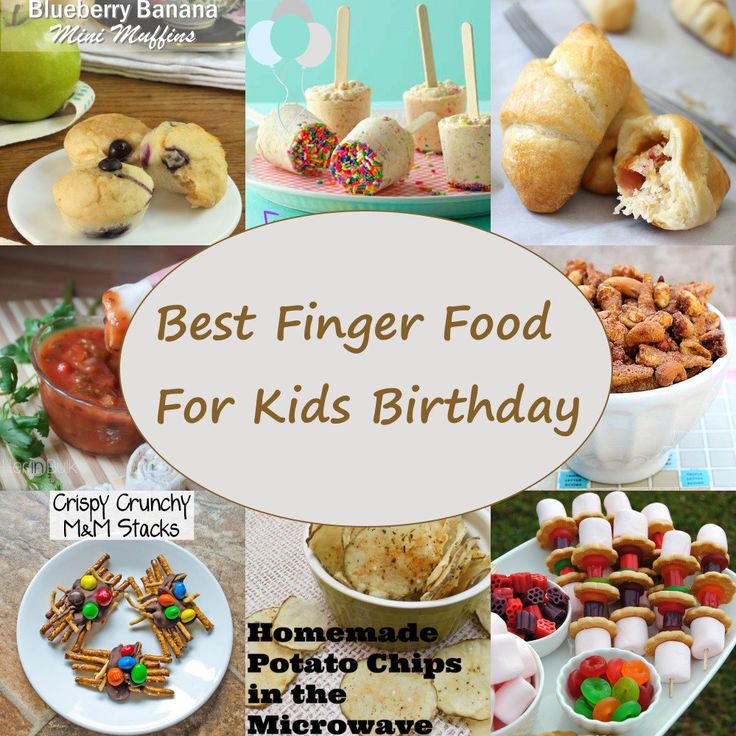
Roasting: Put the peeled banana on a baking sheet and bake at 200 C for 20 minutes, beat with a blender, serve.
Proposed method of consuming bananas in baby food
Bananas are offered fresh, at first the baby eats banana puree, later pieces of bananas, by 12 months the baby can be given a whole banana, which he will eat with pleasure.
A banana is an ideal snack for a child, which can be done on the street, in line, on a journey when it is impossible to eat fully.
The fruit is also very good for breakfast, as it provides a natural boost of energy. You can also add a banana to smoothies, cocktails, sweets, ice cream, pastries, sweet cereals, berry and fruit salad. This fruit makes an interesting sauce for meat and fish dishes.
Finger food
Banana is great for finger food. It is soft and turns into a porridge in the mouth, which is easy to swallow. At first, you can give small pieces of a ripe banana, as the child grows older, you can offer larger pieces. As a result, by 12 months, the child will eat a whole ripe banana.
As a result, by 12 months, the child will eat a whole ripe banana.
I draw your attention once again, we offer the child a soft ripe banana, as he can choke on an unripe product. And also when introducing a banana as a finger food into the diet, adults should always be present and help the baby if he does choke.
Many parents think about how to cut a banana into long, thin pieces that are equal to the thickness of a finger and can easily fit in a child's hand. This is easy to do. We remove the peel to half the banana, remove the black circle from the top of the banana, put our finger in the center and press, as a result, the banana is divided into three equal parts, we get three banana sticks equal in thickness to an adult's finger.
Keep in mind that bananas are soft, so the first time you eat finger food, everything will be covered in bananas. Do not worry, the baby will learn to eat it carefully, but a little later.
Banana drink
Pure banana juice is not made. Banana is mostly used in milkshakes or smoothies as banana puree combined with milk or water.
Banana is mostly used in milkshakes or smoothies as banana puree combined with milk or water.
Banana prepackaged baby food
Prepackaged baby food manufacturers offer many banana products for babies. Basically, pure banana puree is rarely sold, as lemon juice, vitamin C, water, cream, and milk are added to the banana.
Therefore, when buying baby puree, it is necessary to carefully read the composition, if the child is allergic to dairy products or lemon juice, or if these products have not yet been introduced into the diet, then this ready-made food should not be given. I draw your attention to the fact that in Gerber, where it says “Only Banana” on the jars, there is citric acid, vitamin C and water.
Citric acid or lemon juice is needed to keep the banana puree from darkening. However, lemon belongs to citrus fruits, so it is introduced into the diet after 12 months. An allergic reaction is possible to it.
Pure banana juice is also not found, mainly this banana pulp is diluted with water and seasoned with lemon juice or acid.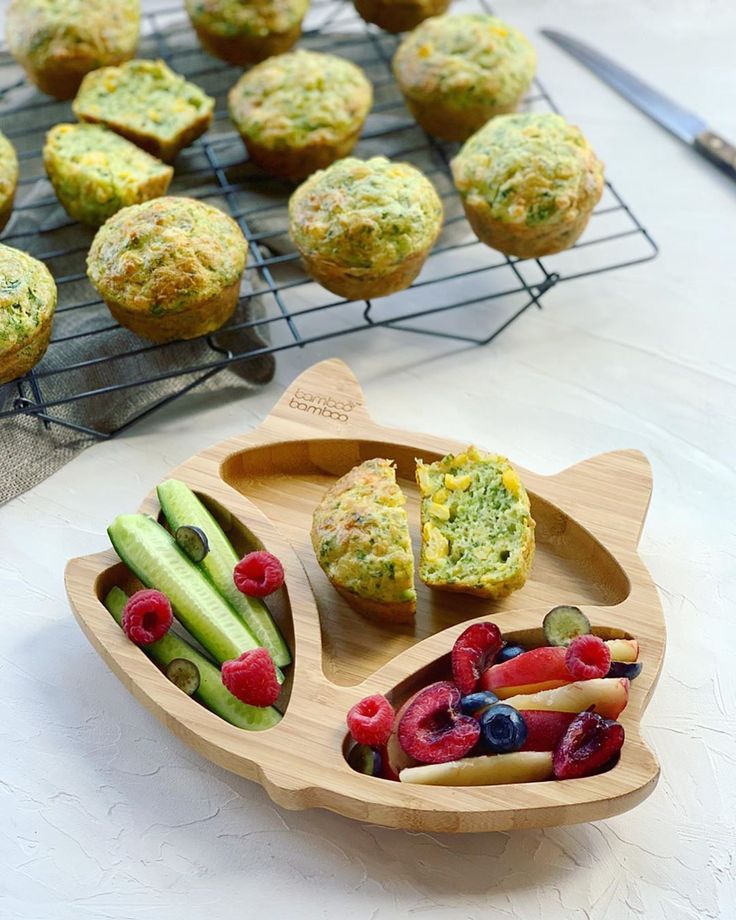
As standard in all baby food manufacturers there are products such as banana puree, banana nectar and apple and banana puree. As it turned out, such a combination is offered by such well-known manufacturers as Frutonyanya, Babushkino Lukoshko, Spelenok, Agusha, Umnitsa, Agu-Agu, Gerber, Heinz, Hipp, Semper, as well as little-known ones - Toptyzhka, Bibikol, Belakt, Little happiness, etc.
Manufacturers also tried and offer many interesting mixes of children's mashed potatoes, cereals, cookies, dairy products and juices:
- Puree apple-Banan-Brothers Frutonia
- Banan-Banan-Banan-club 9000 Frutonyanya 9000
- Puro-pureur Banana-Carrot Frutonyanya
- Juice Apple-Banana-Cherry-Raspberry Frutonyanya
- Milkshake Apple-Banana-Pear with cookies Frutonyanya Kasha-Apple-Ban 004 Frutonyanya
- Apple-Banan-Torrog Babushkino Lukoshko, AGU-AGU
- Purean Banana Malina with cream Swings
- Puree apple-Banan-Percik with creams Rolls
- Gerber
- Banana-Lesnaya berries gerber
- ADV BANAN-Banan-Banan-Banan-Abrikos Gerber
- ALLUST-BANNA-PERSOCE Heinz
- PURA-BANCA0182
Don't forget to bookmark us! (CTRL+SHIFT+D) Subscribe to the site, comment, share in social networks.

Our website Encyclopedia Baby Food has useful information on the nutrition of your children, which is useful for everyone, and we update the website "Encyclopedia Baby Food" constantly and try to search and write only excellent, verified and necessary information for you and your children.
Disclaimer No. 1: It must be understood that the author of the articles on the Baby Food Encyclopedia website is not a medical staff, “I am not a doctor.” The information I share is based on my own experience. My goal is not to teach you how to eat or feed your child, but to talk about how we did it, what new things I learned or read. This expands the picture of Baby Food knowledge, gives you a glimpse of the whole process so you can decide if you like it or not.
Disclaimer No. 2 : However, the above does not cancel visiting a pediatrician. Before you start complementary foods, you need to get his professional opinion on the best way to introduce new foods for your baby.
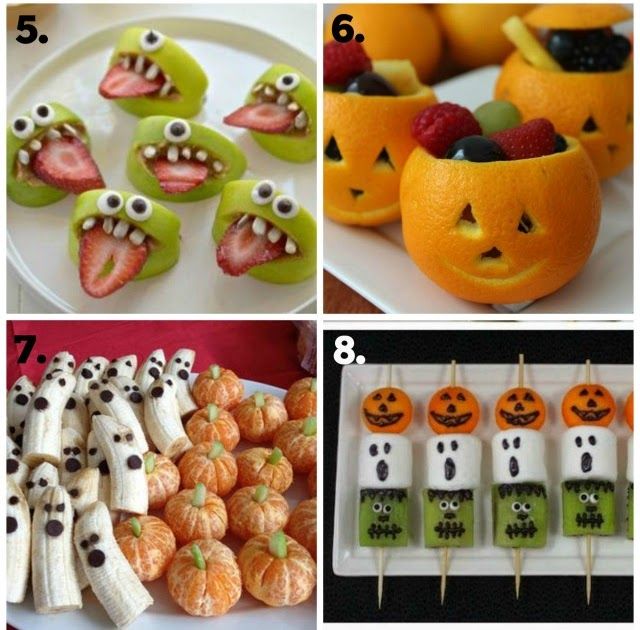 I also draw your attention to the fact that you need to look at the original date of the published articles, because some of the "best practices" may have changed. Always check with your child's pediatrician about complementary foods and their health.
I also draw your attention to the fact that you need to look at the original date of the published articles, because some of the "best practices" may have changed. Always check with your child's pediatrician about complementary foods and their health. Disclaimer #3: Keep in mind that every family is unique, every situation is also completely unique. There are no universal solutions. Only you can find what works best for you. Certain goals require certain sacrifices and priorities - not everyone wants to make those choices, and that's GREAT! Just know what you want to achieve, and be ready to get to work, putting the best of your strength!
Disclaimer No. 4: On the Encyclopedia Baby Food website, photos from books on baby food with attribution are used to better understand the information (Article 1274, paragraph 1, part four of the Civil Code of the Russian Federation). Literature on baby food is found in the public domain on the Internet.
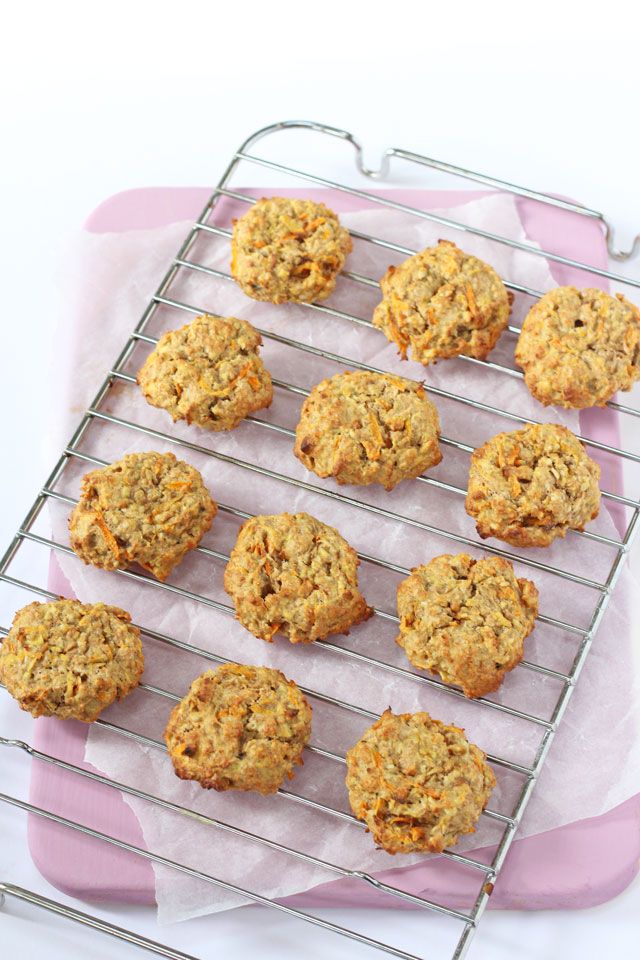
Apricot puree with chicken
3 Bread Lavash
Banan-global puree
Banana puree
borsch
Bouhesica brush with peas and rice
Boturbrod with kohlrabi
Rapid dessert
sin. Buckwheat porridge with apricots
Buckwheat porridge with banana
Buckwheat pilaf
Children's sausage
Children's milk porridge with banana
Children's vinaigrette
Children's ketchup
Children's cucumber salad
Children's salad Olivier
Children's porridge biscuits
Children's puree of strawberries, bananas, yellow cherries, yoghurt and biscuits with cereals
Children's puree with cottage cheese and fruit
Homemade yeast bread with flaxseed flour
Homemade cheese
Homemade pizza
3 Breakfast outside Kohlrabi appetizer
Roasted cauliflower
Roasted carrots
Roasted carrots and cherries with millet
Winter salad with Jerusalem artichoke
Cabbage with white beans
Cabbage salad like in a canteen
Mashed potatoes
Quinoa and pumpkin porridge
Quinoa porridge
Breakfast cereals
Quinoa and apple
Strawberry puree
Strawberry puree with banana
Strawberry compote
Wild apple and raspberry compote
Thermo-steamed fruit compote for children 8 months
Corn porridge
Corn porridge with pear
Corn porridge with pumpkin
Corn porridge with pumpkin and carrots
Corn porridge with apple and carrots
Chicken liver in the oven
Chicken cutlets with carrots
Chicken with carrots, sweet peppers and potatoes
Navy pasta
Macaroni with orange sauce
Muffins with vegetables and egg
Baby potatoes in their skins
Milk vermicelli soup
Carrot-potato puree3 Carrots 9043
Carrots with chicken
Amanita from eggs and tomatoes
Meat envelopes
Homemade Tarragon drink for children
Vegetable puree from cauliflower and carrots
Vegetable soup with corn semolina
Vegetable soup with cheese and corn semolina
Vegetable soup with spinach
Vegetable puree soup with bell pepper
Oatmeal porridge
Pollack fritters
Hot kefir fritters
Omelet in a bag
Omelette with broccoli and omelette cheese33 cabbage
Omelette pancake
Peach puree
Baked apples 7 months +
Zucchini and carrot pie
Zucchini pie
Rice and zucchini pie
Fish pie
Fish and potato pie
White cabbage pizza
Lavash pizza
Zucchini, tomato and sausage pizza
Tomato and olive pizza
Spinach pizza
Rabbit pilaf
Chicken pilaf with green peas and corn
Banana and sweet cherry puree
, cottage cheese and cereals 4 cereals
Broccoli (cauliflower) puree
Broccoli, courgette and cauliflower puree
Blueberry puree
Pear puree
Pear and banana puree
Pear and banana puree, baked
Pear and pumpkin puree 7 months +
Pear, pumpkin and peach puree
Pear, apple, plum and prune puree
Blackberry puree
Turkey puree
Zucchini puree
Zucchini and broccoli puree 904 Carrot & Potato Puree
Quinoa & Banana Puree
Quinoa & Carrot Puree
Quinoa, Banana & Carrot Puree
Quinoa, Squash & Carrot Puree
Quinoa, Peach & Raspberry Puree
Quinoa, Cauliflower, Apple, Pea Puree and mint
Quinoa, apple, pear and raisin puree
Quinoa, apple, carrot puree
Rabbit, broccoli and cauliflower puree
Chicken, carrot, potato, apple and pea puree
Raspberry, cherry and banana puree
carrots
Carrot and apple puree
Carrot, potato, broccoli puree with cheese
Carrot, potato, apple and quinoa puree
Carrot, pumpkin, apple and prunes puree
Carrot, apple and potato puree
Turnip and carrots
Plum puree
Cottage cheese, strawberry and banana puree
Pumpkin puree
Pumpkin and banana puree
Pumpkin and squash puree
Pumpkin and apple puree
Pumpkin, apple and banana puree
Cauliflower and broccoli puree
Cauliflower puree and potatoes
Cauliflower and rice puree
Cauliflower and apple puree
Cauliflower, green peas and courgette puree
Cauliflower, turkey and potato puree
Cauliflower, potato and courgette puree
Cauliflower, carrot and broccoli puree
Cauliflower, carrot, cheese and rice puree
Cauliflower, apple and courgette puree
Zucchini puree
Zucchini and potato puree
Zucchini, carrot and apple puree 94 cherries
Blueberry puree
Prune puree
Apple, pumpkin, carrot and some curry puree
Apple and pear puree
Apple and strawberry puree
Apple, strawberry and cherry puree
Apple, peach and banana puree
Carrot and pumpkin puree
Cottage cheese and banana puree
Turkey, potato and carrot stew
Zucchini, carrot and broccoli stew
Fish, potato, carrot and broccoli stew
Rice porridge
Whole grain rice porridge
carrot
Rice porridge with pumpkin
Rice porridge with apples
Rice porridge with apple and pear
Rice porridge with apple and pumpkin
Fish cakes with vegetables
Semi-cooked fish
Fish meatballs with ketchup
Baby Fish Soup
Salmon and Celery Fish Soup
Carrot and Kohlrabi Salad
Chickpea Salad
Chickpea and Cabbage Salad
Laziest Soup
Creamy Kohlrabi Soup
Oatmeal Smoothie3 Sauce
Cheesy Pizza
Pea and Bacon Soup
Baked Vegetable Soup
Kohlrabi Soup
Salmon Soup
Cauliflower Soup
Turnip Potato Soup
Meatball Soup for the Picky Eater
Kohlrabi soup with green apple
Rabbit, pumpkin, potato, broccoli and cauliflower soup
Beetroot soup
Pumpkin soup with mushrooms
Broccoli and celery soup
Soup/stew Pork with Potatoes and Carrots
Cheese Pasties
Pumpkin Cheese Sauce (Annabelle Carmel Recipe)
Buzz Lightyear Sandwich
Pumpkin Apple Puree
Pumpkin Apple Juice
Pumpkin Cake
Pumpkin Soup 9 Puree
Fruit Salad
Colored cabbage with cheese
Tea linden and thyme
Experimental soup -puree with vermicelli and lentil
Apple puree
Apple ok
finger food
9000 9000 9000 9000 9000 9000 9000 9000 9000 9000 9000 9000 9000 9000 9000 9000 9000 9000 9000 9000 9000 9000 9000 9000 9000 9000 9000 9000 9000 9000 9000 9000 food - this is baby food prepared in the form of pieces of boiled soft food so that the child can take it on his own and transfer it to his mouth, chew or swallow it without assistance and any difficulties.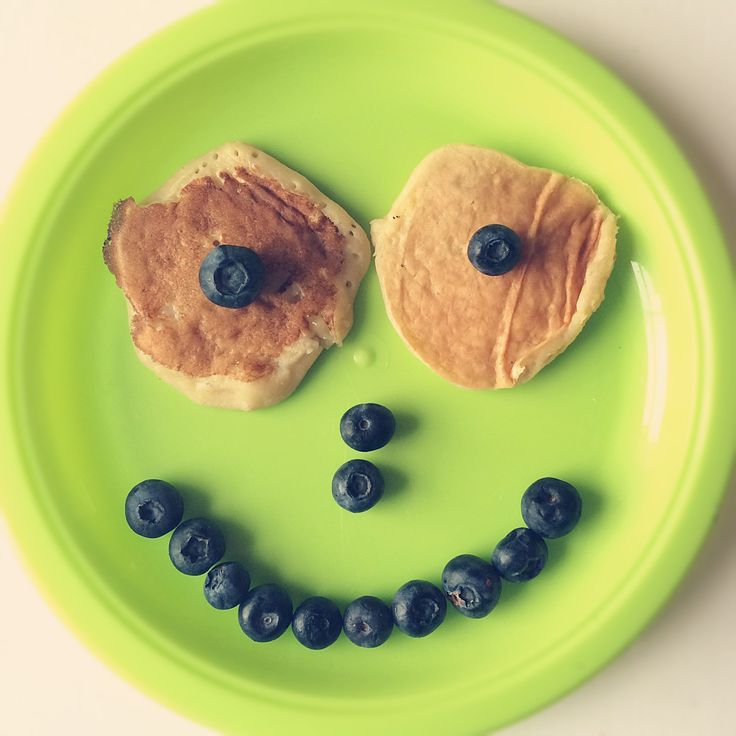
Finger food is a fun way to encourage the development of motor coordination and skills for biting, chewing and self-feeding. Food in pieces should be easy to grasp by children's fingers and long-term storage, and should not contain bones or seeds.
As soon as the child begins to take food with his fingers and put them into his mouth with reasonable hand-eye coordination, then the fun begins! Let your child experiment with soft snacks such as a banana or peach that can be “hand-mashed” to the right consistency. The more a child experiments with finger food, the faster he will masterfully feed himself.
Finger food helps keep a child's food interest. As soon as he begins to feed himself on his own, then new taste horizons open up for him. What child refuses to try to bring the product to his mouth on his own, even if he didn’t really like it before.
Contents:
Very often mothers think at what age should they give finger food to their baby.

Honestly, even for me it's a difficult question. It's just that sometime between eight and nine months, the baby began to eat small pieces of food. The change in the consistency of food by age is very well described in the WHO recommendation, so it should be guided by.
Consistency of food up to a year. Click on me!!!
However, you should not do it blindly and try to feed the baby in pieces at a certain age, perhaps he will not be ready yet. Children are all different, some want food in pieces, almost from the beginning of complementary foods, others are not ready for lumpy food for up to a year or more. Therefore, any decision on finger food is made based on the child and his readiness. An excellent preparation for finger food is a nibbler, which will prepare the child for lumpy food.
The child has no teeth
Click on me!!!A child's gums are incredibly strong, as is the tongue, so the number of teeth is not an indicator of whether to give finger food or not.
 If the decision has been made to start complementary foods and the baby is doing well with mashed foods, then you can safely start giving small pieces of soft food when the baby is ready for it. At this stage, it is important to let the child try to eat food of a different consistency, more complex, in order to train the maxillofacial apparatus. Thus, the child gradually prepares for the full chewing of food with the help of the entire jaw, teeth and tongue.
If the decision has been made to start complementary foods and the baby is doing well with mashed foods, then you can safely start giving small pieces of soft food when the baby is ready for it. At this stage, it is important to let the child try to eat food of a different consistency, more complex, in order to train the maxillofacial apparatus. Thus, the child gradually prepares for the full chewing of food with the help of the entire jaw, teeth and tongue. How to know if finger food is safe for a child
A good rule of thumb to help prevent choking is to avoid anything hard (e.g. raw carrots), round (e.g. whole grapes), sticky (e.g. , spoon of nut butter) or too much gummies (such as gummies). At first, the child is given pieces of food in the form of sticks, which can be easily clamped in the child's chick, later, when the child begins to control the finger grip better, you can move on to cubes.
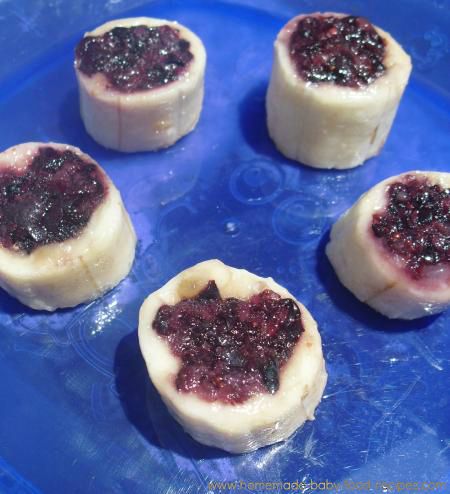 At first, finger food should be soft, boiled and melt in your mouth. As a child learns to manage with such products, it is possible to complicate the task and switch to fresh soft foods, etc.
At first, finger food should be soft, boiled and melt in your mouth. As a child learns to manage with such products, it is possible to complicate the task and switch to fresh soft foods, etc. Foods that squeeze easily between fingers are good for older children and for younger children. Around 16-18 months, many babies are ready for more complex textures. During this period, cutting food into pea-sized pieces is also a good idea - many babies tend to put large pieces of food in their mouths, so small cubes are used to avoid choking. We always adjust the sizes of products according to the age and eating experience of our own child.
Usually the first finger food is biscuits or baby biscuits, which are very soft and dissolve easily in the mouth. The baby first sucks it, procrastinates, and learns to roll pieces of food in the mouth with the help of the tongue. A little later, when the teeth appear, you can give the product a little harder, for example, a soft apple, some parents play it safe and give a baked apple without a peel.
 Later, as new foods, vegetables and fruits are introduced into complementary foods, they are offered in the form of finger food, such as boiled broccoli or cauliflower. In general, the child can be offered almost all products in the form of finger food, which is introduced into baby food.
Later, as new foods, vegetables and fruits are introduced into complementary foods, they are offered in the form of finger food, such as boiled broccoli or cauliflower. In general, the child can be offered almost all products in the form of finger food, which is introduced into baby food. Should the product be peeled or not?
We give an apple to a child without a peel.The first finger foods in the form of vegetables and fruits are given without skins. Yes, the skin of many fruits and vegetables contains valuable nutrients. It is often recommended to leave the skin on in order to take full advantage of the nutrients contained in the product. But removing the top layer from fruits and vegetables helps reduce the amount of pesticides that may be in the product. Peeling fruits and vegetables helps avoid choking hazards due to the rough texture of the skins. The peel also usually sticks to the palate in the child's mouth, thereby hindering him, and can be there for a long time, and when the child swallows, the probability of choking in the absence of an adult nearby is higher.
Banana is convenient to eat with a small hand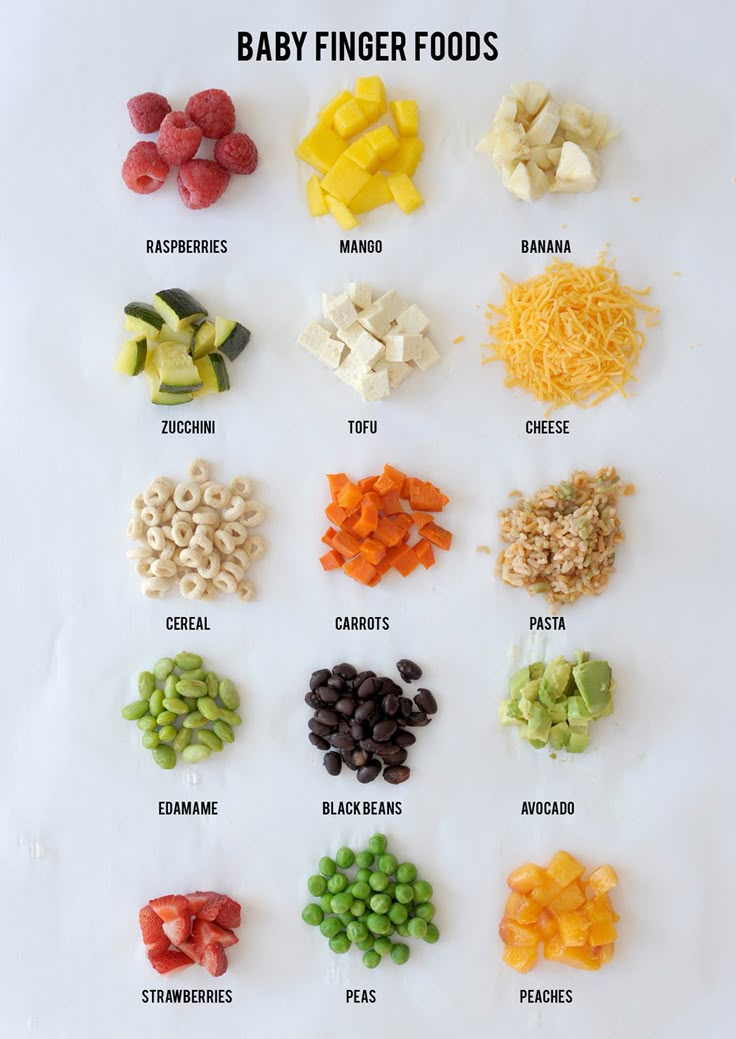 Getting rid of the skin at the beginning of complementary foods also helps prevent disorders
Getting rid of the skin at the beginning of complementary foods also helps prevent disorders digestion. And also consider that there are some vegetables and fruits, such as pumpkin and avocado, which need to be peeled, because their peel is really inedible. It is not worth getting rid of the product from the peel for a long time, only at first. Usually the first couple of months of complementary foods and exposure to finger food. Then the product with the peel is given to the child in the presence of an adult, after which it is advisable to check the baby's mouth to see if he swallowed everything. Forcibly open your mouth should not be, play the game "Show your tongue or where are your teeth." By the age of 1.5, the child copes well with the peel of fruits and vegetables, if it is too rough, then it easily spits it out.
Choking
The presence or absence of teeth does not mean that a child can chew.
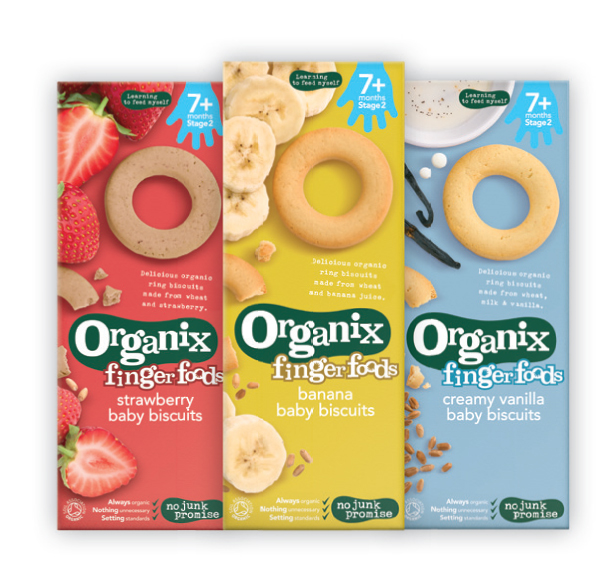 Sometimes children can bite off a piece of food, try to swallow it whole and choke, so never leave a child alone while eating. Some children can store food in their mouths like hamsters, so we always check to make sure the child has swallowed everything before leaving the kitchen. You can read the article on suffocation here.
Sometimes children can bite off a piece of food, try to swallow it whole and choke, so never leave a child alone while eating. Some children can store food in their mouths like hamsters, so we always check to make sure the child has swallowed everything before leaving the kitchen. You can read the article on suffocation here. Our finger food
At first I gave biscuits to my first child, later I switched to a fresh apple, mostly fresh fruits, he sucked and procrastinated them more than he ate. Later, food appeared in the form of a toy, i.e. we crumbled it, crushed it, and sometimes something got into our mouths. However, since breast milk is always given at the end of complementary foods, I was not too worried about whether the baby was full or not.
With the second child, finger food was a gradual transition from the nibbler. We used it for about a month, then I ventured to give the first pieces of food. But to be honest, the child himself tried the first pieces of food, namely, he stole an apple and took a bite.
 The first experience of finger food is always scary, because at first the child often coughs and spits out food, he is learning, so it is important to be with the child, if something goes wrong, then the parent will be able to provide first aid. I remind you that the child is suffocating quietly, not a single sound. If he coughs, clears his throat, then everything is within the normal range, you need to help get rid of the food that interferes. Rules for helping with choking know before introducing finger food into complementary foods. It is imperative to look and study, and then give a new consistency of complementary foods.
The first experience of finger food is always scary, because at first the child often coughs and spits out food, he is learning, so it is important to be with the child, if something goes wrong, then the parent will be able to provide first aid. I remind you that the child is suffocating quietly, not a single sound. If he coughs, clears his throat, then everything is within the normal range, you need to help get rid of the food that interferes. Rules for helping with choking know before introducing finger food into complementary foods. It is imperative to look and study, and then give a new consistency of complementary foods. Of course, at first, only one type of finger food is placed in front of the baby, later a plate is bought, divided into three to five sections, which is filled with finger food. The baby is already given a choice of what to eat, so you can easily determine the taste preferences in nutrition.
Finger food quick hacks
- The first finger food should be well kneaded between the gums.
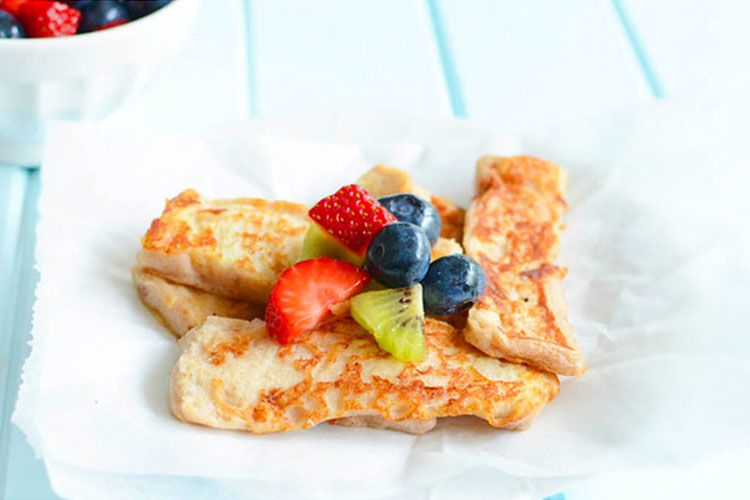
- Food in pieces should be age appropriate - do not offer whole eggs to 8 month old baby .
- If the child cannot raise his head and sit up without help, do not offer him finger food.
- The child should always sit in an upright position, not walk, especially at the first meeting, when he is offered baby food in the form of pieces, to avoid suffocation.
- NEVER leave your child unattended when serving finger food.
Examples of finger food
The first finger food is a biscuit or a baked apple. Those. food that does not need to be chewed, it melts easily in the mouth without additional help from the child. You can start with foods that have been well received by the child in a pureed form on a spoon, serving them in convenient cubes or pieces - the size of a pea for harder items, the size of a stick or wedge for softer foods.
- The first finger food should be well kneaded between the gums.
- Boiled fish
- Boiled meat in the form of meatballs
- Pasta
- Quail eggs, etc.
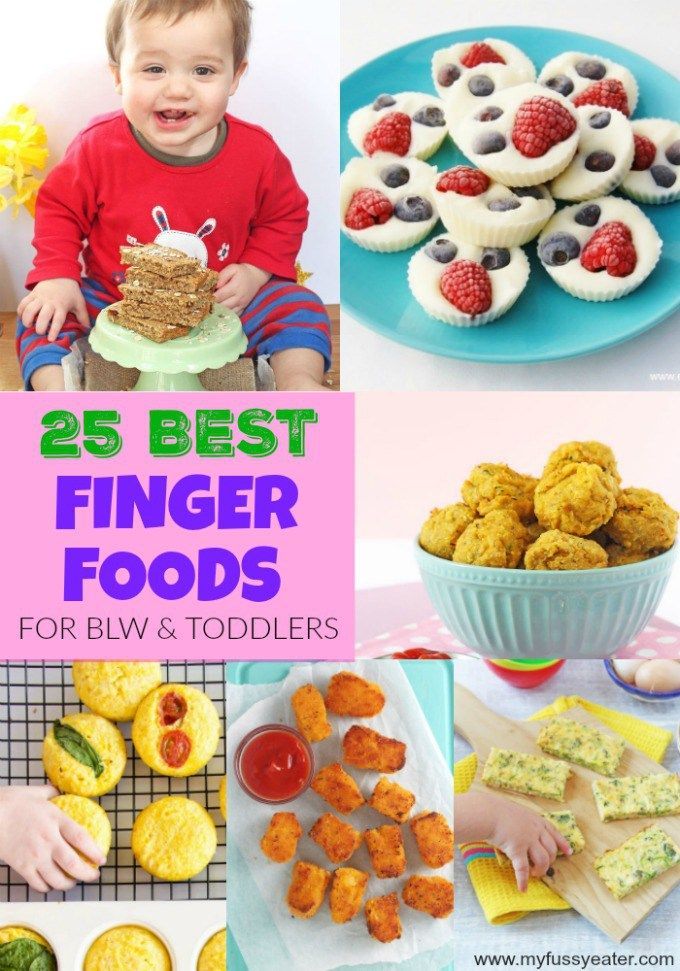
*All products must be familiar to the child or introduced into complementary foods.
Finger food to avoid
When it comes to feeding a baby with food pieces, the biggest problem is preventing choking. So we do not allow him to eat anything without the presence of parents or any adult nearby. And we exclude any food that can get stuck in the child's airways:
Click on me!!!- Popkorn,
- Nuts, arachy,
- raisins and other dried fruits,
- raw vegetables (for example, carrots),
- Grapes,
- popcorn, pretzels, corn chips and other snack foods
- marshmallows, etc.
9 Solid fruits and vegetables with skin 9024
Most doctors do not recommend these foods until the child can eat them safely - around 4 years (although it depends on the child, closer to 3 or 5 years).
We are not afraid and add me to VK and Odnoklassniki, Instagram!
Like this article? Subscribe to site updates
"Encyclopedia Baby Food"!
Don't forget to bookmark us! (CTRL+SHIFT+D) Subscribe to the site, comment, share in social networks.

Our website Encyclopedia Baby Food has useful information on the nutrition of your children, which is useful for everyone, and we update the website "Encyclopedia Baby Food" constantly and try to search and write only excellent, verified and necessary information for you and your children.
Disclaimer No. 1: It must be understood that the author of the articles on the Baby Food Encyclopedia website is not a medical staff, “I am not a doctor.” The information I share is based on my own experience. My goal is not to teach you how to eat or feed your child, but to talk about how we did it, what new things I learned or read. This expands the picture of Baby Food knowledge, gives you a glimpse of the whole process so you can decide if you like it or not.
Disclaimer No. 2 : However, the above does not cancel visiting a pediatrician. Before you start complementary foods, you need to get his professional opinion on the best way to introduce new foods for your baby.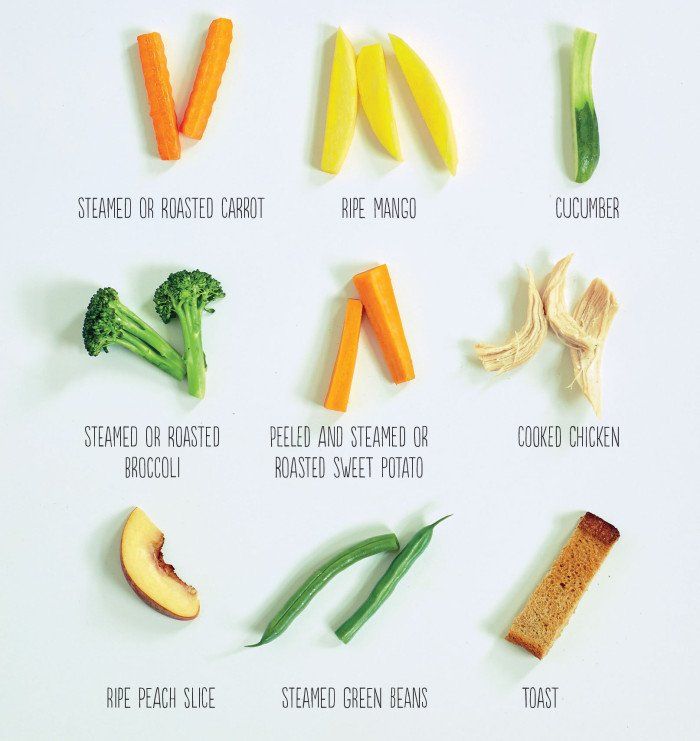 I also draw your attention to the fact that you need to look at the original date of the published articles, because some of the "best practices" may have changed. Always check with your child's pediatrician about complementary foods and their health.
I also draw your attention to the fact that you need to look at the original date of the published articles, because some of the "best practices" may have changed. Always check with your child's pediatrician about complementary foods and their health.
Disclaimer #3: Keep in mind that every family is unique, every situation is also completely unique. There are no universal solutions. Only you can find what works best for you. Certain goals require certain sacrifices and priorities - not everyone wants to make those choices, and that's GREAT! Just know what you want to achieve, and be ready to get to work, putting the best of your strength!
Disclaimer No. 4: On the Encyclopedia Baby Food website, photos from books on baby food with attribution are used to better understand the information (Article 1274, paragraph 1, part four of the Civil Code of the Russian Federation). Literature on baby food is found in the public domain on the Internet.